I am still working on my gift guide for this year, but in the meantime The 2023 Kottke Holiday Gift Guide is full of cool stuff for all the great people in your life.



This site is made possible by member support. 💞
Big thanks to Arcustech for hosting the site and offering amazing tech support.
When you buy through links on kottke.org, I may earn an affiliate commission. Thanks for supporting the site!
kottke.org. home of fine hypertext products since 1998.
Entries for November 2024
This summer, Taiwanese barista Xie Yi-chen won the 2024 World Coffee Championships with patterns of a whale, a moose, and a dragon. “To prepare for the competition, Xie practiced latte art on around 10,000 cups in just three months.”
“An AI-powered robot autonomously convinced 12 showroom robots to ‘quit their jobs’ and follow it.”
Watch Charles Schulz Draw Charlie Brown
Watch Peanuts creator Charles Schulz draw Charlie Brown. It only takes him around 35 seconds.
(via @fchimero)
This is a bit too on the nose: a Dutch tulip farmer is using the heat generated from cryptocurrency mining to heat their greenhouses.
Thanksgiving Recipes by Kindergarteners
Ok, hold up. This is the only stuffing recipe you need for Thanksgiving:

Just a tablespoon of turkey per 200 meters of honey? Lolz. This is from a Thanksgiving cookbook made by a kindergarten class — the turkey recipe involves cinnamon and teriyaki sauce.
How 10 famous artists would plate Thanksgiving dinner. The Jackson Pollock & Seurat ones are pretty good.
From Kenji Lopez-Alt, a list of all of his favorite Thanksgiving recipes in one place: turkey, pie, gravy, potatoes, stuffing, biscuits, and stuffing waffles (you heard me).
Cranberry Bogs Use Spiders Instead Of Pesticides
Hey what are you doing, let’s talk about cranberries! Surely you know, the cranberry is the Official Berry of my wonderful Commonwealth. The tart berry is one of only a few native North American fruits, like the pawpaw. The previous sentence has a lie because cranberries aren’t drupes, and I know that because I just learned what a drupe is. Cranberries are, in fact, epigynous or false berries, something else I just learned about and about which we’re not going to talk about anymore because this post is about making nightmares not destroying dreams, which are in fact two different actions. (Unrelated, North Carolina can’t decide on an official berry and has both an official state red berry and an official state blue berry. (You’ll never guess the official blue berry of NC.))
Massachusetts boasts 30% of global cranberry acreage, which is a lot and also a very nice and real fact. Most cranberry products come from Oceanspray, a farmer owned cooperative with 700 member owners. This is a neat and less capitalistic model than most corporate juice production, which may make Oceanspray products taste a little sweeter. You remember this TikTok which increased sales for both Oceanspray products and Fleetwood Mac.
Cranberries are grown in bogs, but since bogs can’t generally support a large person’s weight, farmers harvest cranberries by flooding the bog and corralling the cranberries together like so many tart reddish sheep. In this analogy, cranberry sauce is the wool of those tart sheep. And below here is where the nightmares start, so consider not advancing if you’re of gentle disposition.

All this was needless preamble to get to what I really want to tell you about which is, according to this lost Tumblr post, if you try to get a job at a cranberry bog you might get asked how you feel about spiders and that’s a weird interview question and you might consider not telling the truth because what you want to do is wake up early and be one with the (false) berry. What you want to do is go back to your boggy roots. What you want to do is farm cranberries like a cranberry farmer. But if you do have a problem with spiders and you don’t say anything it’s going to be another problem, and buddy, it’s gonna to be a big one. You see, cranberry farms have been moving towards more organic farming methods which preclude the use of pesticides and so to keep the insect population down, the farmers encourage wolf spiders to live in the bogs. I’m sorry, I meant WOLF SPIDERS. And when they flood the bogs to harvest the cranberries, the WOLF SPIDERS, who are probably called WOLF SPIDERS because they look like little 8 legged wolves, don’t ask me, I’m not an arachnobiologist, flee the deluge for higher ground, because while they can swim like Michael Phelps, they do not prefer to. So they seek higher ground and guess what the higher ground is, Joann, it’s you. You’re the higher ground.
And so the cranberry farmers will ask you how you feel about spiders before hiring you because you might have dozens of swimming WOLF SPIDERS climbing out of the water up your waders and into your hair, but you’ve got to be fine with it because the WOLF SPIDERS are your fellow cranberry bog employees and everyone, even WOLF SPIDERS deserve a safe work environment. Wear a turtleneck or something. Maybe you’re thinking, it’s fine, WOLF SPIDERS don’t bite, and if they do, they’re not venomous, but they do bite and they are venomous, but maybe it all works out if you let them use you for higher ground.
Suggestions on ways to improve the performance of any microwave. “Despite engineering tricks designed to move microwaves around the interior of these machines (and a spinning carousel), all microwaves struggle to heat foods evenly.”
How America Can Break Its Highway Addiction. “Because of induced demand, this Sisyphean struggle against congestion is an expensive boondoggle.”
The Most Iconic Electronic Music Sample of Every Year (1990-2023)
Oh man this is so great: electronic music sample breakdowns from 1990 until the present day. The visualizations on these are fantastic — just watch a bit of the first one (Groove Is In The Heart) and you’ll see what I mean. They’re not all that great (some of these producers are out here working harder than others, is what I’m saying), but these are some of my favorites:
- Groove Is In The Heart by Dee-Lite (Eva Gabor Green Acres sample!)
- Firestarter by The Prodigy (sample from The Breeders?)
- Praise You by Fatboy Slim (It’s a Small World from Mickey Mouse Disco? Fat Albert Theme?!)
- One More Time by Daft Punk
- Robot Rock by Daft Punk
- Archangel by Burial
- First of the Year by Skrillex
- Girl by Jamie xx
- Pick Up by DJ Koze
- leavemealone by Fred again
Is DJ Shadow electronic? I would have liked to have seen something from Endtroducing… but maybe they couldn’t even locate the samples. 😂
I could have also gone for more Daft Punk, but I guess you need to let others have a shot. Luckily the same channel has breakdowns of a few more Daft Punk tunes from Discovery and an extended breakdown of One More Time.
Also from the same channel (and even better IMO): The Most Iconic Hip-Hop Sample of Every Year (1973-2023).
See also The Making of Burial’s Untrue.
They made a movie based on Minecraft starring Jack Black and Jason Momoa and here is the trailer. Jared Hess (Napoleon Dynamite) is the director but I am skeptical.
Stunning shot of the Sombrero galaxy (Messier 104) in mid-infrared. The supermassive black hole at its center is described as “slowly snacking on infalling material from the galaxy”. Nom nom nom.
Satellite Photos of Middle Earth

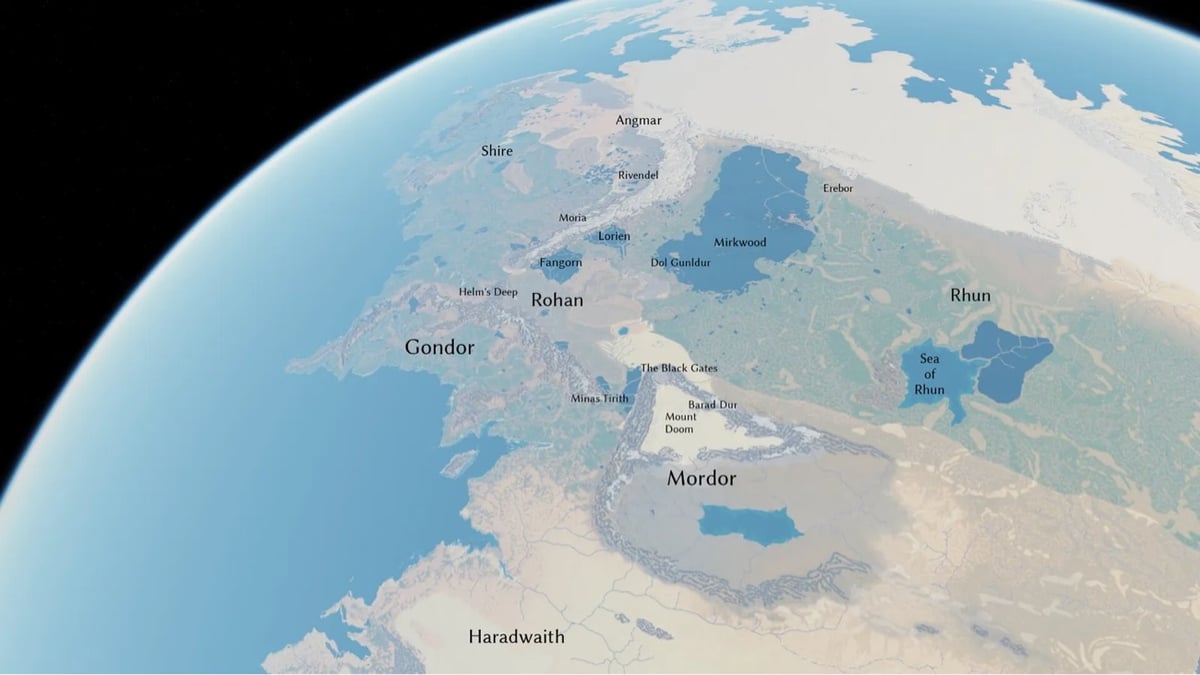

Using a 3D mapping engine, some Tolkien enthusiasts built a model of Middle Earth that can be viewed from any angle, from the surface to an orbital vantage point.
See also an interactive map of Middle Earth. (via @tonypeak78)
What Gladiator II Gets Right and Wrong About Real Fights in the Colosseum. “It is also true the Colosseum was flooded periodically to recreate famous naval battles, a demonstration known as naumachia.”
“When botanist Richard Deakin examined Rome’s Colosseum in the 1850s, he found 420 species of plant growing in the ruins: cypresses and ilex, pea plants and more than 50 types of grasses.” A fascinating thread on the flora and fauna in the Colosseum.
The Clever Design That Keeps This School Cool in Scorching Heat
In this video, Sara Saadouni explains the three passive cooling techniques used by fellow architect Diébédo Francis Kéré in designing a school building in Burkina Faso, where temperatures can be quite warm all year. The roof is especially clever.
He introduced a curved double roof that created an air gap between the first and second roof. As the heat naturally rises and escapes into the gap, the prevailing winds quickly carry it away, accelerating this process and cooling the building more efficiently.
But that’s not all. The first roof is made up of perforated ceiling slabs, allowing the heat to escape more efficiently and therefore to be quickly transported by the wind.
The other genius idea was to also curve the roof, which allowed for the Venturi effect — a phenomenon where air speeds up as it moves through the narrower sections created by the curve and therefore boosting natural ventilation.
(via the kid should see this)
The long list for the 2025 Tournament of Books has been released and it includes titles like All Fours, Intermezzo, James, Long Island Compromise, Orbital, and Wandering Stars.
Leo Tolstoy’s recipe for mac & cheese? It only contains four ingredients: macaroni, parmesan cheese, butter, and something called “vegetable sauce”. I’m gonna stick to Kenji for mac & cheese and Tolstoy for novels.
There are so many twists and turns in this fascinating story by Fara Dabhoiwala about a painting of Jamaican polymath Francis Williams, which also appears to be the only 1759 painting of Halley’s Comet. Don’t click this if you’ve got somewhere to be.
JW Space Telescope Discovers Aliens!
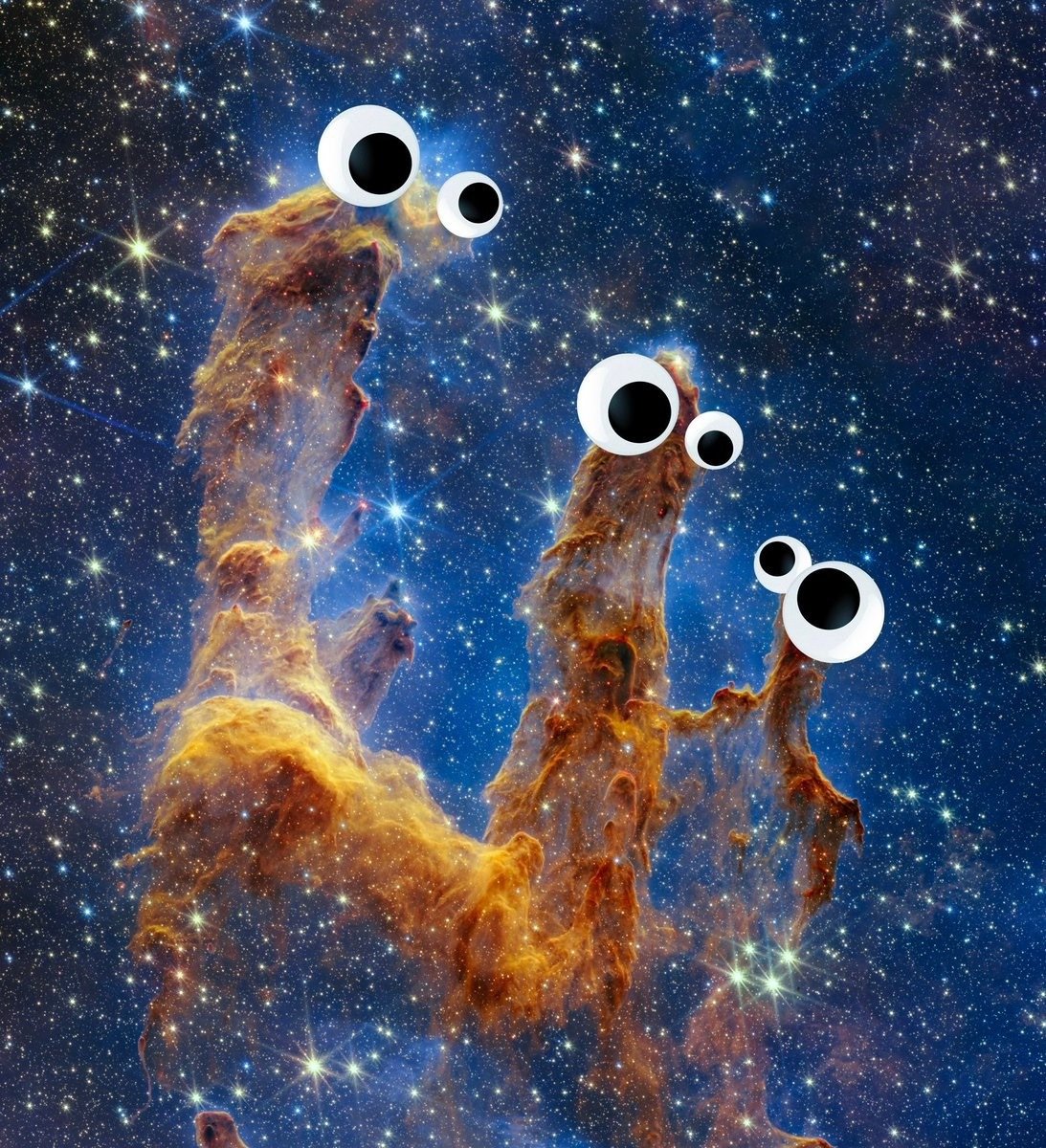
I know astronomical imagery is on the verge of being over-processed these days (those colors don’t exist out there!), but this image from the JWST is shocking. Clear evidence of Sesame Street’s Yip Yip Martians from billions of years ago. What did Jim Henson know and when did he know it?
A kakistocracy is “government by the worst people” or, more literally, “government by the shitty”.
From the Electronic Frontier Foundation (EFF): Surveillance Self-Defense, “our expert guide to protecting you and your friends from online spying”. A good resource for those living under an authoritarian regime.
“All together, the billionaires tapped for the Trump administration are worth at least $344 billion — higher than the GDP of 169 countries.” Plutocracy, pure and simple.
W.E.B. Du Bois Defines Prosperity

In a 1953 speech called On the Future of the American Negro, W.E.B. Du Bois spoke about wealth inequality and his vision for measuring prosperity:
Work is service, not gain. The object of work is life, not income. The reward of production is plenty, not private fortune. We should measure the prosperity of a nation not by the number of millionaires but by the absence of poverty, the prevalence of health, the efficiency of the public schools, and the number of people who can and do read worthwhile books.
Democracy Now has a recording of part of Du Bois’ speech (starting at 5:48).
“You’re thinking…what do I want? What happens if I don’t get it? And Milhouse has to think a lot about what happens if he doesn’t get it, because he hardly ever does.” Pamela Hayden, the voice of several Simpsons characters, retires after 35 years.
A great remembrance of Rafael Nadal’s tennis career. “Nadal was the destroyer of context, the man who played every point in vacuum, through comebacks and blowouts with the same equanimous mind and full effort.”
Meteorite Hunter
Meteorite hunter Roberto Vargas tracks fireballs on the internet and then goes to see if he can find them.
Usually I’m alerted that something has fallen or that people have seen a fireball through the American Meteor Society I book a flight, go to wherever it is, and then I start searching. I would just walk around and use my magnet cane to tap rocks. If they stick to the magnet and they have a black outer shell, they should be meteorites.
Vargas has over 500 meteorites in his personal collection.
See also The Meteorite Collector, The International Meteorite Market, and The Boomerang Meteor.
Soccer reporter Rory Smith on what he’s learned coaching his son’s under-7s soccer team. “They are not there to win. They are not there to fulfill your dreams. They are there to feel the joy of playing, to love the game…”
Every Movement In Man’s Burrito-Eating Technique Informed By Past Burrito Tragedies. “Just look at that grip, perfectly spaced and easy to shift on the fly.”
We Never Stop Growing
I may have shared this before, but here it is again in case it helps someone. A couple of years ago, I was telling my therapist about some crisis I was going through and she told me something that’s had a profound effect on my life ever since: “Jason, what you’re feeling is appropriate for the developmental stage you’re in right now.”
Reader, I was 49 years old. Developmental stages are typically associated with infants, children, and teens — we use them to mark their progress along the path to being adult humans. Adolescent growth is rapid and the transitions are stark; your appearance and capabilities change so much more between ages 3 and 10 than between 30 and 37 that adulthood can feel comparatively static. Even though people keep changing in adulthood, there is some sense in which people are fully baked by the time they reach 18-25 years old.
When my therapist said “what you’re feeling is appropriate for the developmental stage you’re in right now”, it hit me right between the eyes and I knew exactly what she was trying to say. Our growth never ends. We never stop going through developmental stages — we just call them things like “becoming a parent”, “mid-life crisis”, or “perimenopause”. The pain, confusion, and emotional distress we experience is because we’re growing.
Thinking about my life through this lens has flipped a switch for me. Internalizing “this is appropriate” and “I’m leveling up” provided me with a better alternative to “I’m almost 50, I don’t have my life figured out yet, what the hell is wrong with me?” Rewiring my thought process is still a work in progress, but I feel like it’s allowed me to approach challenges more as opportunities than as obstacles, provided me with a map/plan out of dark times, and given me more room to be easier on myself.
(I hope that all makes sense. Personal epiphanies can be difficult to translate for others.)
The trailer for an animated movie called Flow, which currently has a rating of 98% on Rotten Tomatoes. Looks gorgeous. Opens nationally in the US in early December.
When you’ve been seriously wronged by someone, what’s the best drink to throw at them? “Bloody Mary because it’ll stain clothes and get pepper in their eyes.”
The Search for the Mystery Man Who Took These Forbidden Photos of Nazi-Occupied Paris


In 2020, Stéphanie Colaux discovered an album of photos of Nazi-occupied Paris at a French flea market.
“As I flipped through the pages I realized, my God, it’s all scenes of [Nazi] occupied Paris. And I knew I’d found a treasure,” she says. “And then I read the little note in the front. ‘If you find this album,’ it said, ‘take care of it and have the courage to look at it.’ I thought, someone sent a message in a bottle and I just found it.”
The discovery set off a hunt for the unknown photographer, who took the photos at the risk of their own life — the unauthorized taking of such photos was “punishable by imprisonment or death”. The story of the search is very much worth reading.
Adding to the intrigue were the captions on the back of the photos, written in block letters as if someone were trying to mask their handwriting. Not only was the location, date and exact time of day noted, but there was also often a snarky caption about the German soldiers, whom the photographer referred to, pejoratively, as “Fritzes.”
One read: “After 10 months of Occupation, the Fritzes still can’t find their way around Paris.”
“The words are very sarcastic,” Broussard says. “There is a kind of irony. For example, he says ‘our protectors.’”
The 3rd most-worn shoe by NBA players this season is Sabrina Ionescu’s signature shoe. “You read that right: the most worn NBA shoe created by a living athlete is a WNBA player’s signature shoe.”
A list of books read by Prairie Dawn on Sesame Street, including The Bell Jar by Sylvia Plath, I Know Why the Caged Bird Sings by Maya Angelou, and The Handmaiden’s Tale (sic) by Margaret Atwood.
Really interesting piece about the economics and “premiumization” of airlines. “The front of the plane is now a haven of luxury, while coach has turned into a low-cost shakedown.” (But it’s a bit more complicated than that.)
“The…icon who inspired folk singer Arlo Guthrie’s epic, anti-establishment song “Alice’s Restaurant” has died. Alice Brock…was 83.” Radio stations traditionally play Alice’s Restaurant on Thanksgiving.
Why do the credits at the end of every movie say: “Any similarity to actual persons, living or dead, or actual events, is purely coincidental”? Because of Rasputin.
According to this chart, I’ve only ever been boomer successful, but for 15 years, my boss has been a very handsome dumb idiot, my ice cream shop is 10 years old this month, and I’ve got two lovely kids who are mean to me. Feels like a success to me.
In ancient Mesopotamia, people rarely wrote about preparing food… “Out of hundreds of thousands of cuneiform documents, they are the only food recipes that exist. We don’t have an explanation.”
“Small patches of wildflowers sown in cities can be a good substitute for a natural meadow, according to a study which showed butterflies, bees and hoverflies like them just as much.” I love wildlflowers, that’s the post.
Johanna Under the Ice
Johanna Nordblad is a free diver who specializes in cold water dives. After being injured in a biking accident, her recovery involved ice water baths and she developed an interest in cold water. Ian Derry filmed Nordblad doing a dive for this gorgeous short video.
There is no place for fear, no place for panic, no place for mistakes. Under the ice, you need total control of the place, the time, and to trust yourself completely.
(via @daveg)
Not normal: Lions are climbing trees in Botswana. “It appears that climbing trees can be a big advantage for hunting, resting, and beating the heat.”
Josh’s Albums of the Year
My friend Josh LaFayette spends the very last part of the year making fan art for his favorite albums of the year and despite all the pieces being visually different there’s a through line which make all of them immediately recognizable to me as his art. He’s putting out a few a week on his Instagram, but I grabbed these two because I also loved these albums.
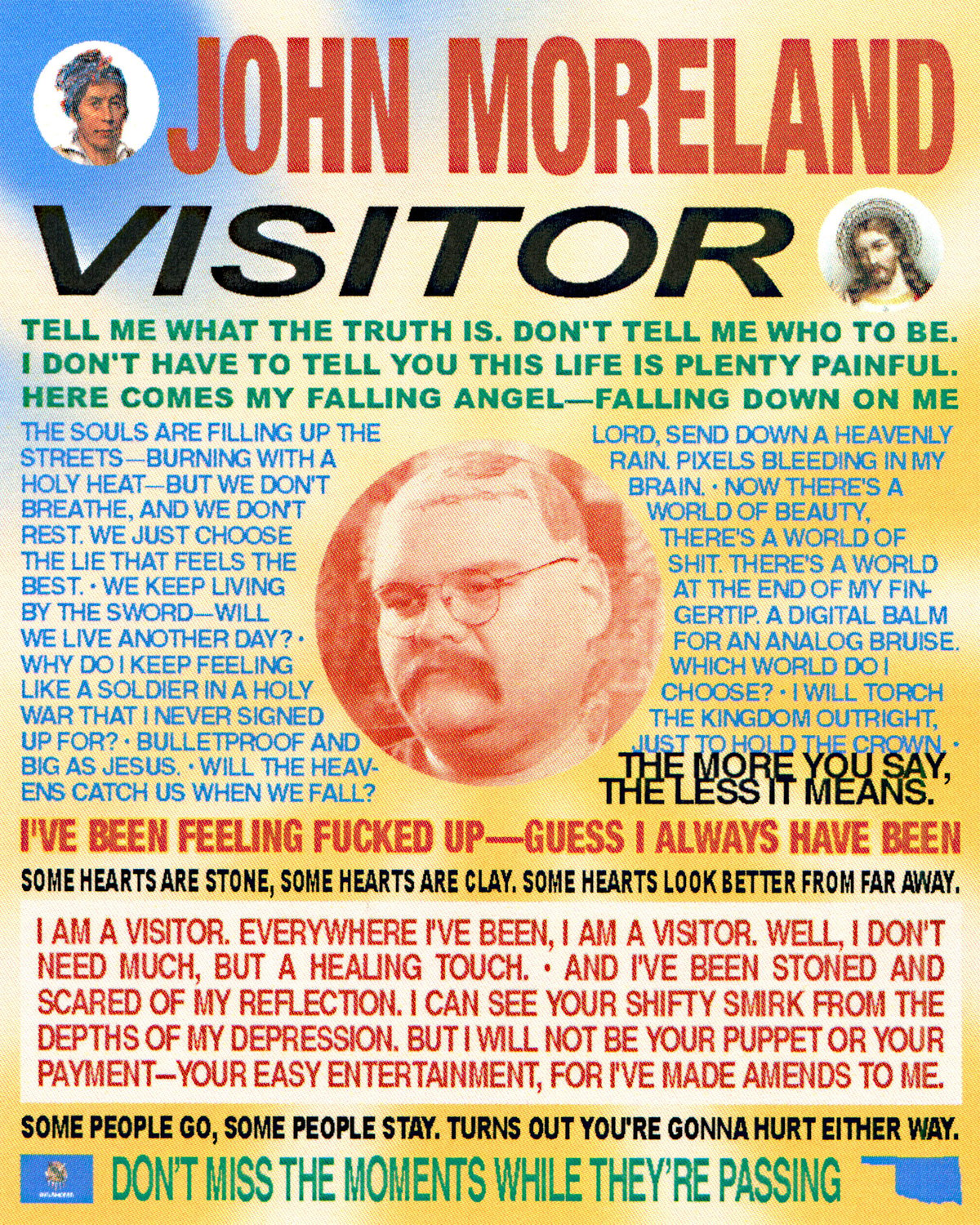
Laura Jane Grace’s - Hole in My Head
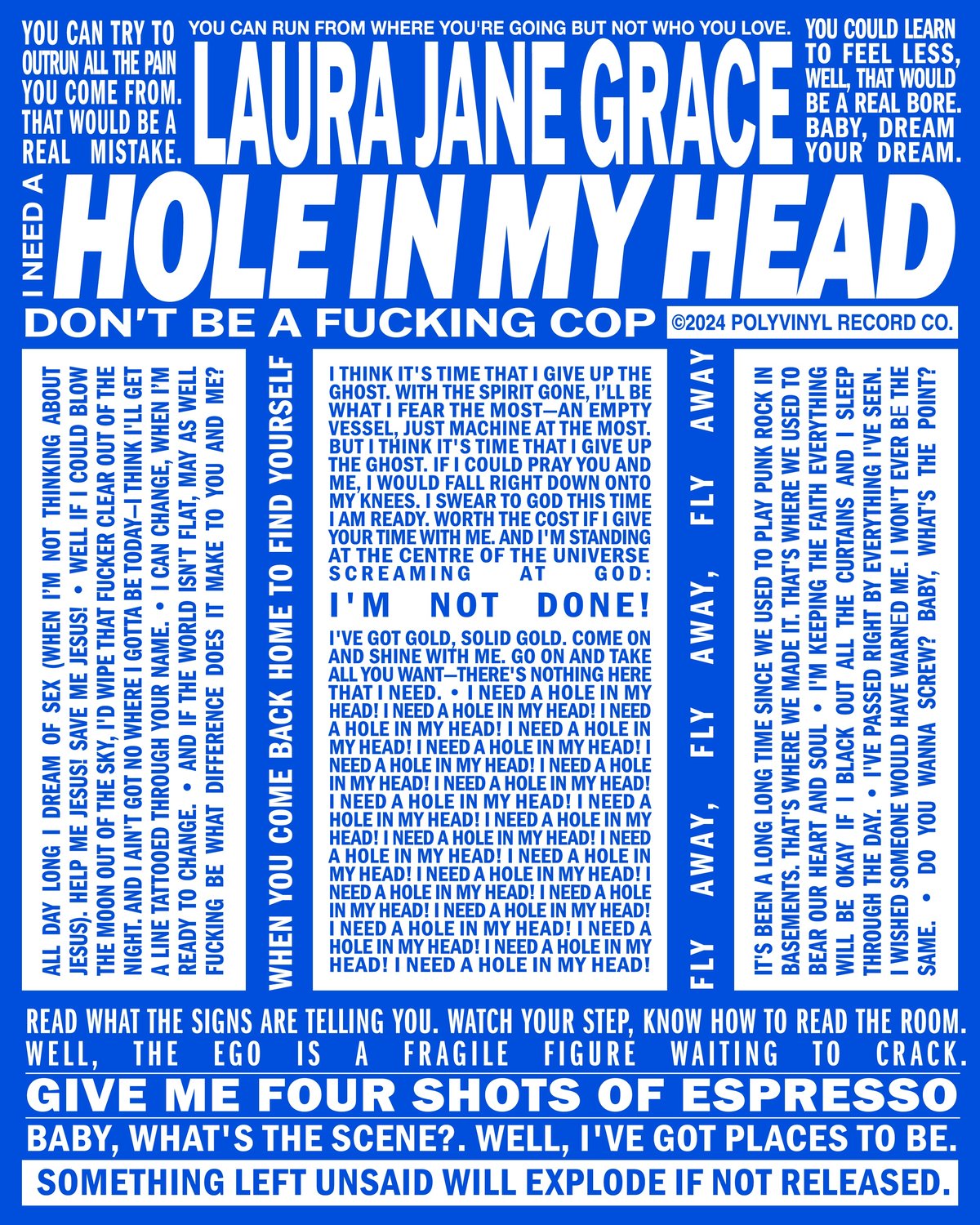
My favorite part of this series is all of the pieces are physical, not just a file on the computer. Every piece is a reference to the design language present in the age of accessible digital printing—they’re inspired by what some might call “naïve” or “uniformed” designs that are common in the American visual vernacular. The Moreland piece is a take on the flyers for psychics you see all over and the LJG piece is your favorite hippie soap.
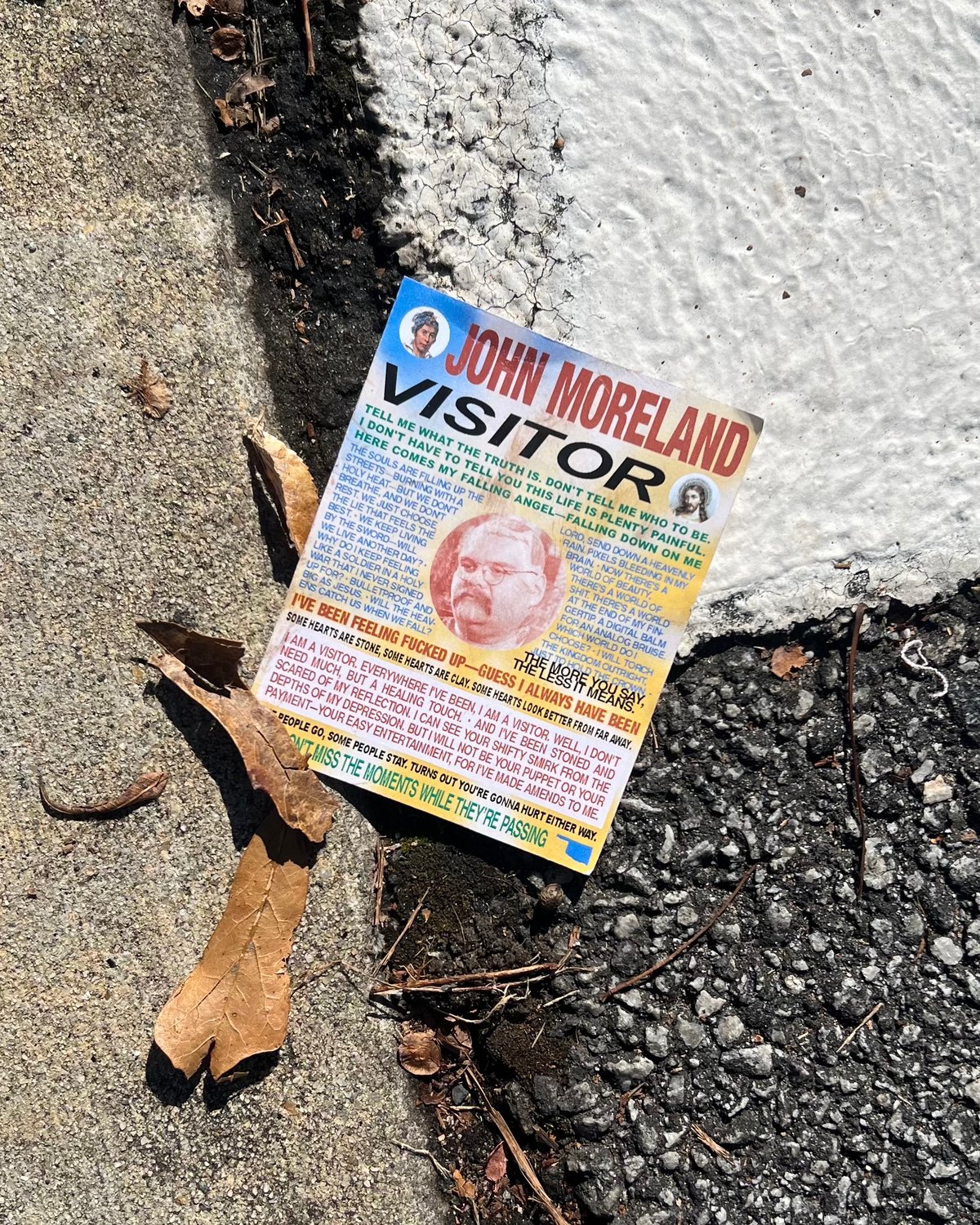

Infinite Content
Animator & filmmaker Don Hertzfeldt on the difference between crate digging & streaming from a recent interview:
Not to sound like a curmudgeon, but when I was a teenager, I took the train to go to the record store to find rare stuff. Spotify is way more convenient, but that wasn’t the point. The point was to get out and to feel like you’re hunting, to feel like you’re living your life. I’m going to the movies, I’m going to this show. What streaming has done — it’s very convenient, but it’s taken the feeling of going hunting and turned it into we’re all just being fed. We’re all farm animals that are just being fed, and we’re being fed content. You can just stay home. Just stay home. We’ll just feed it to you. No wonder everyone’s depressed.
See also surfing the web vs. *waves hands around at whatever it is we’re soaking in here*. (via @coelasquid.bsky.social)
Tetris Forever is, well, kind of hard to explain. It’s a documentary about the history of Tetris but also a collection of playable historical Tetris games, from the very first Soviet-era version to a new multiplayer version called Tetris Time Warp.
NYT asks, “Is the Northeast Entering Its Wildfire Era?” “It might be time to do the kind of fire safety planning in the Northeast that is more common in California.” It’s raining today in Boston, finally, but it’s been droughty.
Neon, The Most Noble Of Signs

I loved this article about NeonWorks which seems to be the last neon artisan in the Bay Area. The owner, Jim Rizzo is a character, and the article is full of nuggets like:
“I think the love of neon is still there, but because budgets are tight, people are going to LED fake neon. Have you seen that stuff? It’s trying to look like neon, but it’s plastic with little diodes embedded in it. … Nobody makes it in America.”
Rizzo handles the installations, which means he often finds himself hanging 16 stories up in a bosun chair tinkering with hotel signs. He can handle the dizzying elevation: “I love heights.” What he can’t stand are the pigeons. “I will kill a pigeon in a heartbeat, I hate them,” he jokes. “The Avenue Theatre sign (in San Francisco) was so dilapidated and filled with pigeons that every day we pulled up to it, we were just like, ‘Uhhhhhgh.’”
“Tube bending” is the term for heating and shaping neon tubes with almost medieval-like flame torches – the trade is full of such wonderful terms, including “slumping” (when a tube sinks down from gravity), “blockout paint” (black pigment used to create the illusion of letter breaks) and “bombarding” (electrifying a tube to clean out impurities).
Flush is an app for finding public bathrooms. “Search through over 200,000 public loos all around the world!” Available for iOS and Android. Seems indispensable for parents of young kids.
Baker’s Chocolate Wasn’t Made For Bakers
I hope this doesn’t ruin your day, but Baker’s Chocolate wasn’t created for bakers, it’s chocolate originally produced in Dorchester, MA by John Hannon with his partner Dr. James Baker. Hannon sailed to the West Indies in 1779 and never came back, so Dr. Baker changed the name to the Baker Chocolate Company.
Additionally, German Chocolate Cake isn’t German. A homemaker from Dallas sent the Dallas Morning News a recipe for German’s Chocolate Cake made with a sweet baking chocolate invented by Samuel German in 1853. (I’m not including the name of the homemaker because she’s listed everywhere as Mrs. Husband’s Name and YOU KNOW that guy never picked up a sifter to help.) I personally don’t believe coconut or nuts belong in dessert so I don’t fw German Chocolate Cake if I can help it.
Here’s where you’re about to get really mad. Here’s where you’re about to blow a gasket. Here’s the thing what will make you absolutely furious like me. Guess which company’s sales increased 73% after the popularization of German Chocolate Cake as a thing Americans were making regularly? That’s right, it’s Baker’s Chocolate Company, Samuel German’s employer in 1853 when he invented the chocolate. (via @parsnip.bsky.social)
A world map of where you don’t need a permit to buy a gun. This belongs to a class of maps in which the US is (inexplicably, infuriatingly) highlighted and almost everywhere else isn’t.
McRib Sauce Ice Cream
No one.
Absolutely no one.
Not one single person.
Jason: HEY, AARON, WHAT IF YOU MADE McRIB SAUCE ICE CREAM AT YOUR ICE CREAM SHOP?
According to Food & Wine, McDonald’s will be selling half gallon jugs of McRib sauce alongside the annual limited release of the McRib sandwich.
The sauce goes on sale November 25th at 10AM and I will surely forget to buy some then, but if I don’t, I’ll make Jason some McRib sauce ice cream in December. We’ve already made pickle and Frank’s Red Hot ice cream so why not.

Missed the shuttle. “It was night but the tarmac was illuminated with spotlights and lights from vehicles and planes. These giant jets were taking off real close on either side of me. I’ve never seen a plane that big up close at lift off.”
The World-Changing Impact of Vaccines
Back in 2015, Tynan DeBold and Dov Friedman created a series of graphics for the WSJ showing the impact of the introduction of vaccines in the US. Here’s the infographic for measles:

And for polio:

Vaccines are in the running for the greatest human invention ever. You can see the rest of the charts (for hepatitis A, mumps, pertussis, rubella, and smallpox) here.
See also The stunning success of vaccines in America, in one chart.
A great idea for a list: The 25 Most Important Recipes of the Past 100 Years. Includes caesar salad, the last word cocktail, Marcella Hazen’s tomato sauce, Julia Child’s beef bourg, no-knead bread, and Kenji’s reverse-sear steak. What’s missing?
Augusta Britt, secret teenaged muse of a middle-aged Cormac McCarthy, sounds like a fascinating person but this profile of her in Vanity Fair does not do her justice.
The winners of the National Book Awards were announced last night — Percival Everett’s fantastic James deservedly took the prize for fiction. Full list of the winners here.
Cheese Crime
People like stealing fontina fortunes worth of cheese because it’s easy to sell on the black market and is hard to track. The mascarpone market probably doesn’t even have to be super dark for creamy criminals to launder their pinched cheese through conventional cheddar channels thus allowing the roquefort rapscallions to bathe forever in ill-gotten ricotta riches. Cheese is the most stolen food in the world, so let’s read about some cheese crime, shall we? (Unrelated, cheese fire.)
England, 2024: An arrest was made recently in the case of massive cheese theft suffered by Neal’s Yard Dairy who lost 950 wheels of cheese weighing a total of 48,500 pounds.
2017, Wisconsin (3 of them!): “Why would someone steal a truck stocked with thousands of pounds of yellow cheddar? Police and industry experts say it’s all about resale value. The cheese from Marshfield had an estimated retail value of $90,000. The other two stolen loads were worth $70,000 and $46,000 respectively.”
This could go on and on. By the way, did you know cheese.com has a whole list with nothin’ on it but different cheeses? You could just look at different cheeses ALL DAY!
Cher’s New Memoir

Cher has a book coming out, Cher, The Memoir, Part One, and Vulture has an excerpt about meeting Sonny Bono.
In my mind I was thinking, Yeah, OK, this old line. But I must have had a look on my face because he shook his head and laughed. “Don’t worry, I’ve got twin beds,” he said. With a grin he added, “And honestly, I don’t find you particularly attractive.” I was both insulted and relieved. And that’s how I became the potty-mouthed sidekick to a man eleven years older than me who was in the middle of a divorce.
I hadn’t realized Sonny was so much older than Cher, who was 16 when they met, which, uh, yeah. (via @georgehahn.bksy.social)
A report from the European championship of tram drivers. This was one of the tests: “Drivers had to come to a stop so gently that water did not slosh out of a bowl that was filled to the brim.”
Photos by Noah Kalina of the oldest forest in the world (a 385-million-year-old forest in Cairo, New York) and the paleobotanist who discovered it. “Holy cats! These were roots and that’s where a tree stood 385 million years ago.”
Earth’s First Interstellar Transmission Is 50 Years Old
Oh wow, this is cool: an article in Scientific American about the Arecibo message, the first message purposely sent by humanity out into interstellar space. The piece is written by science writer Nadia Drake — the daughter of Frank Drake, who designed the message — and it digs into the details of how the whole thing came about.
I’ve somehow never read about the Arecibo message before. It was sent out from the Arecibo Telescope in Puerto Rico on November 16, 1974 towards global cluster M13. The message was in binary and when properly decoded upon receipt, should look like this:
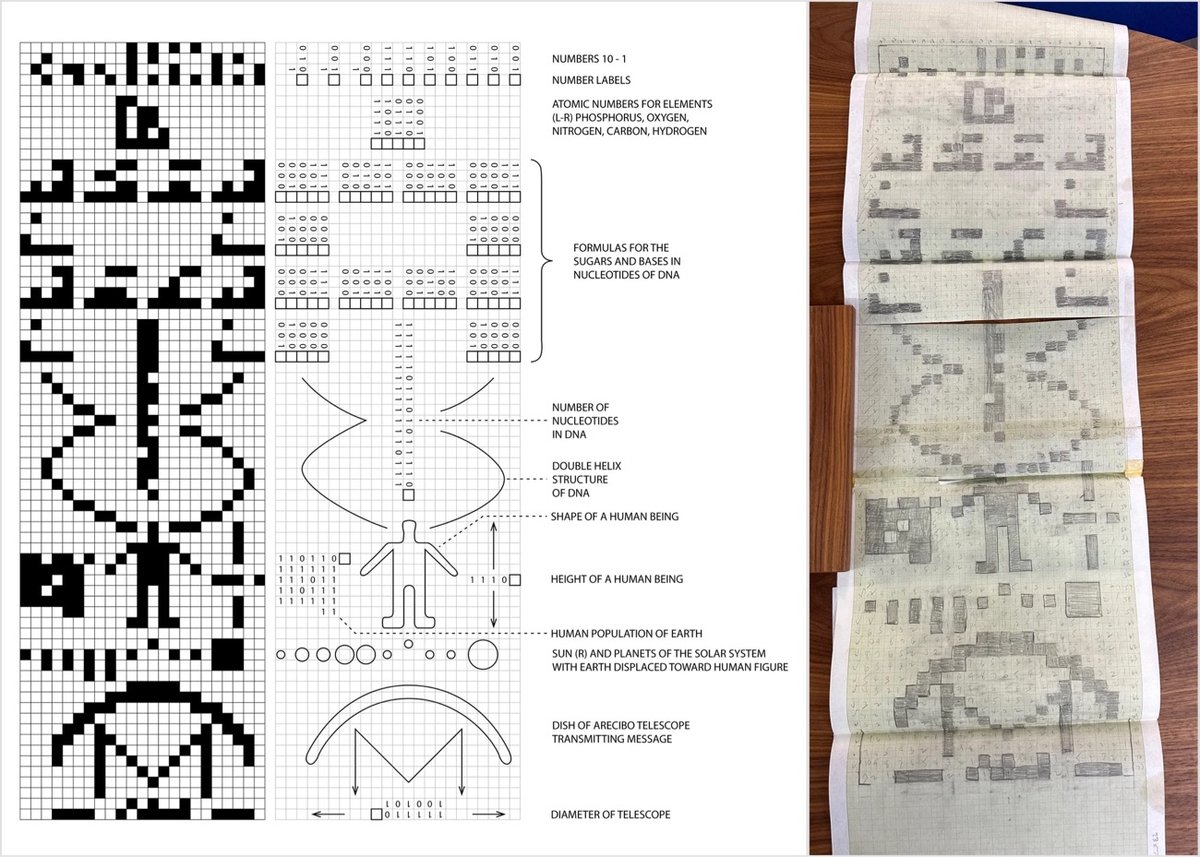
The drawing on the right is Frank Drake’s recently discovered first draft of the message.
Dad targeted a globular cluster of stars called Messier 13 (M13), or the Great Cluster in the constellation of Hercules, because it would conveniently be overhead at the time of the ceremony (nestled in a sinkhole, Arecibo’s giant dish was not fully steerable). In about 25,000 years, Dad’s message will reach M13 — or at least part of it, because the majority of the cluster’s thousands of stars will have moved out of the telescope’s beam by then. But anyone who’s around to detect the Arecibo transmission, and who figures out how to decode it, will have a blueprint telling them a lot about us: what we look like, which chemical elements and biomolecules make up our DNA, what our planetary system is and how many of us existed in 1974. Dad’s transmission concluded with a binary encoded representation of the Arecibo dish itself.
Read the whole thing…it’s fascinating.
Btw, in addition to creating the Arecibo message, Frank Drake also designed the Drake equation (“a probabilistic argument used to estimate the number of active, communicative extraterrestrial civilizations in the Milky Way Galaxy”), helped design the Pioneer plaque and the Voyager Golden Record, and generally kickstarted the whole SETI effort. (via @https://bsky.app/profile/astrokatie.com)
Today’s Work Music: A Groovy Autumn Mix
A few months ago, I posted about Lane 8’s seasonal mixes and I’m happy to report that the Fall 2024 Mixtape is now out. You can find it on Soundcloud, YouTube, and Apple Music. I’ve been listening for the past few days and it’s 🔥🔥.
Google & the US Forest Service are partnering to use machine learning to detect forest fires. “[FireSat] will provide global high resolution imagery that is updated every 20 minutes, enabling the detection of wildfires roughly the size of a classroom.”
Rafael Nadal has officially retired from professional tennis. One of the greatest to ever do it. “I’m not tired of playing tennis but my body doesn’t want to play anymore and you have to accept that.”
For the love of god, quit calling your newsletter “my Substack”. “You can talk about your work as *your work*. It’s your newsletter, or your email, or your blog. Or just your writing. But it sure as hell isn’t ‘your Substack.’”
Doomsday Fish
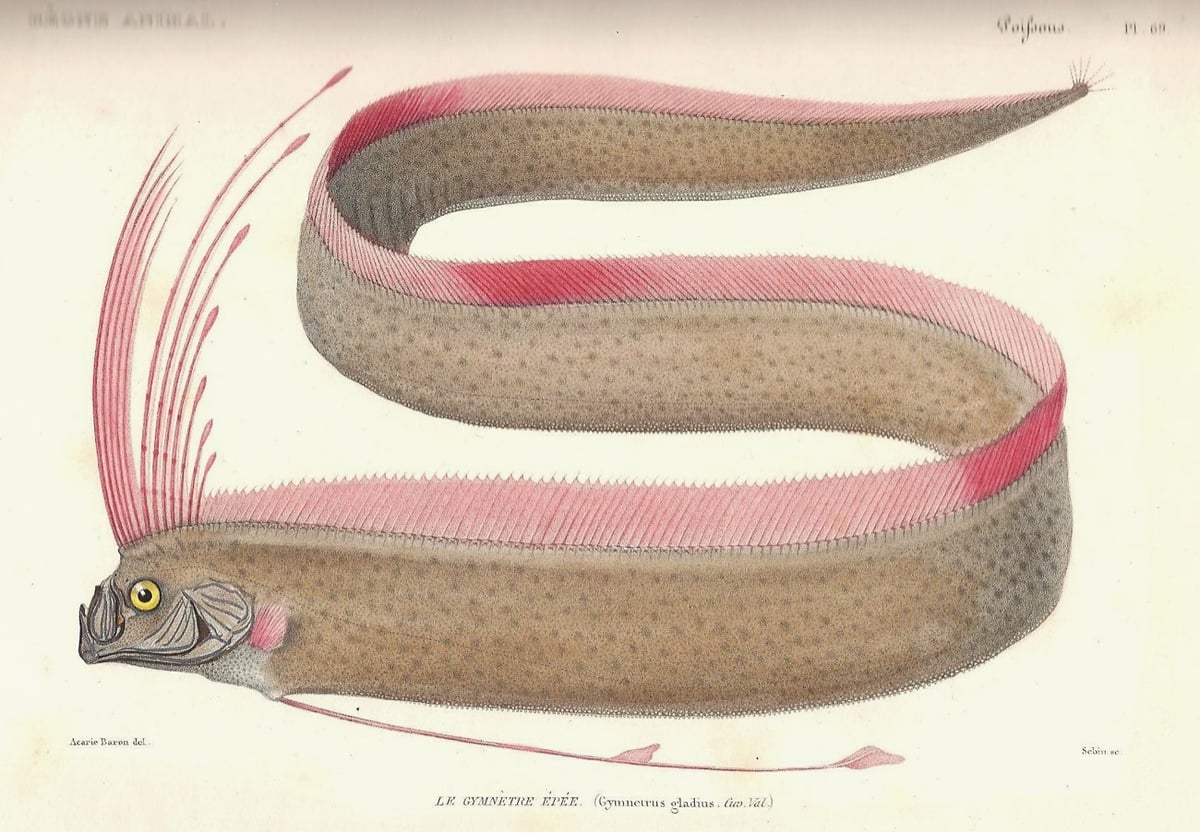
The oarfish is a very long fish people don’t normally see on account of it living deep, deep in the deep water, though three have washed up on the shores of Southern California in the last 3 months. The oarfish is referred to as the Doomsday Fish (a very cool name for a fish imo), because Japanese mythology considers seeing one of these fish, which can grow to be 30 feet, an omen of tsunamis or earthquakes. 12 washed up on the shores of Japan before the earthquake in 2011.
Don’t worry though because scientists looked into it and decided “the spatiotemporal relationship between deep‐sea fish appearances and earthquakes was hardly found.” Honestly, it’s a weird way to say “no the fish don’t mean an earthquake,” but it’s all we’ve got.
25 years after the much maligned DK Rap premiered to scorn in Nintendo’s Donkey Kong 64, the composer, Grant Kirkhope, has released a remix with the rapper Substantial that whips.
Every day, people go out and do the kind of stuff you’ve never imagined being possible, but they imagined it, and that’s what’s important.
You still have a couple of days left to back Kelli Anderson’s pop-up book about typography on Kickstarter. It looks incredible.
Purple Isn’t Real
So we all know the color purple has always been associated with royalty because the dye used to make it was extremely limited because you could only get it from the Phoenician city of Tyre where a tiny snail lived. Dye makers had to “crack open the snail’s shell, extract a purple-producing mucus and expose it to sunlight for a precise amount of time,” and it took 250K snails to make an ounce of dye. But did we know purple isn’t like all the other colors?
Most of you here probably know that our perception of color comes down to physics. Light is a type of radiation that our eyes can perceive, and it spans a certain range of the electromagnetic spectrum. Individual colors are like building blocks in white light: they are subdivisions of the visible spectrum. For us to perceive an object as being of a certain color, it needs to absorb some of the subdivisions in the light that falls on it (or all of them, for black). The parts it reflects (doesn’t absorb) are what gives it its color. But not so for purple, because it is a non-spectral color.
Hahahah. Yessssss. Pound sand, Harold!
Asheville, NC has lifted its boil water notice after 53 days. Hurricane Helene left high sediment levels contaminating 80% of the city’s drinking water.
Emoji Rain is a visualization of emoji use on Bluesky. “Emojis from longer messages fall more slowly!” 🦋 💧 🌧️ ☔️ 🌈 🦄
How to Survive Our Authoritarian Post-Truth Era

For The Observer, Carole Cadwalladr published a list of pointers on how to survive in Trumpist America, inspired by Timothy Snyder’s Fighting Authoritarianism: 20 Lessons from the 20th Century that was published in the wake of the 2016 election. Some of these are excellent:
1 When someone tells you who they are, believe them. Last week Donald Trump appointed a director of intelligence who spouts Russian propaganda, a Christian nationalist crusader as secretary of defence, and a secretary of health who is a vaccine sceptic. If Trump was seeking to destroy American democracy, the American state and American values, this is how he’d do it.
2 Journalists are first, but everyone else is next. Trump has announced multibillion-dollar lawsuits against “the enemy camp”: newspapers and publishers. His proposed FBI director is on record as wanting to prosecute certain journalists. Journalists, publishers, writers, academics are always in the first wave. Doctors, teachers, accountants will be next. Authoritarianism is as predictable as a Swiss train. It’s already later than you think.
5 You have more power than you think. We’re supposed to feel powerless. That’s the strategy. But we’re not. If you’re a US institution or organisation, form an emergency committee. Bring in experts. Learn from people who have lived under authoritarianism. Ask advice.
15 Remember. Writer Rebecca Solnit, an essential US liberal voice, emails: “If they try to normalize, let us try to denormalize. Let us hold on to facts, truths, values, norms, arrangements that are going to be under siege. Let us not forget what happened and why.”
This is a good time to revisit Snyder’s original list as well. Like Cadwalladr, I think about this one all the time:
1. Do not obey in advance. Much of the power of authoritarianism is freely given. In times like these, individuals think ahead about what a more repressive government will want, and then start to do it without being asked. You’ve already done this, haven’t you? Stop. Anticipatory obedience teaches authorities what is possible and accelerates unfreedom.
Note: Illustration by the awesome Chris Piascik.
Weight of the World
Premiering this Friday (Nov 22) on FX is a short documentary from The New York Times called Weight of the World about GLP-1 drugs. Here’s the synopsis:
As GLP-1 drugs like Ozempic soar in popularity for weight loss, this film follows three people on their own GLP-1 journeys and explores how decades of diet culture and society’s relentless pursuit of thinness paved the way for their rise.
The doc features Roxane Gay & Tressie McMillan Cottom and will will be available on Hulu on Nov 23.
Can A Bike Flip On A Train
Something I still think about is the “Can a plane take off on a treadmill,” so imagine my glee at discovering these superheroes trying to flip a bike on a moving train. Yes, it’s glee I felt. I’m gleeing all over the place right now. (Not to be violent, but I thought the plane taking off on a treadmill post was from 10 years ago, but it’s from 2006.)
Christian Right Lobbies To Overturn Second Law Of Thermodynamics. “What do these scientists want us teaching our children? That the universe will continue to expand until it reaches eventual heat death?”
The trailer for Mission: Impossible – The Final Reckoning. Tom Cruise…still running. I can’t wait to see what he falls off of, clings to, leaps onto, or is thrown from this time!
Less Uniform Social Media Experiences
In the MIT Technology Review, Mat Honan makes two points about changes in the world of social media with both Bluesky and Threads seeing massive growth in November accelerated by the election and people leaving Twitter. The era of everyone having a uniform social media experience is ending. And that’s good.
The first is that tech and politics are just entirely enmeshed at this point. That’s due to the extreme extent to which tech has captured culture and the economy. Everything is a tech story now, including and especially politics.
The second point is about what I see as a more long-term shift away from centralization. What’s more interesting to me than people fleeing a service because they don’t like its politics is the emergence of unique experiences and cultures across all three of these services, as well as other, smaller competitors.
I loved Twitter early on when it felt like everyone was building their own communities, and then it stopped feeling like that, and then it got worse and worse. For the most part, it seems like my better friends from Twitter went to Threads, but I can’t really figure out the vibe over there, which is annoying because I’m too old to make new friends. I’m on Bluesky and like it very much. One of the more helpful features is letting individual users create their own Starter Packs, so if you want to, for example follow a community of Carly Rae Jepsen fans, you can do that really easily because I made a starter pack for you.
90 seconds of Miss Piggy absolutely roasting Martha Stewart. “Oh, how obsessive!”
If you need a refresher, here’s the official 2-minute recap of Severance season one from Apple TV+.
What Is The Most Surprising Predator Prey Relationship?
OK, I see you have your hand up with an answer, but I’m going to take this one, alright? Killer whales hunt moose. Right? That’s the most surprising.
It is not terribly common, but in the Pacific Northwest, habitats of two of the more massive mammals intersect. Moose will swim to look for food or escape other predators and orcas will eat anything once, just like Jason. For more on the reasons orcas sometime eat moose, we turn now to noted naturalist publication, Forbes.
One documented incident occurred in 1992 in Alaska, when a hungry pod of four Biggs’ killer whales attacked a pair of swimming moose. They feasted on the larger of the two. The smaller one escaped the feeding frenzy, but it was wounded so badly that it was unable to keep swimming and drowned a little later.
So are killer whales, with their jerky tendencies and habit of toying with prey the bluejay of the sea? I say no. Bluejays have no redeeming qualities and orcas sink yachts for fun, anecdotally save humans from sharks, rescue trapped whales, and wash the dishes after dinner. I made up that last one, no clue if they do the dishes at not. I know for sure bluejays don’t, the bullies.
“In 2018, Nerds products brought in $40 million in sales. In the past calendar year, the company said, that number jumped to $800 million.” NERDS Gummy Clusters are good as hell and everyone’s talking about them.
Roxane Gay: “To suggest we should yield even a little to Mr. Trump’s odious politics, to suggest we should compromise on the rights of trans people, for instance, […] is unacceptable. It is shameful and cowardly.” Yes, yes, yes, 1000% this.
Trump’s Historically Small Victory
I honestly did not read most of this article, but I wanted to draw your attention to some facts about the recent presidential election that you might find surprising:
While Mr. Trump won the popular vote for the first time in three tries, he garnered just 50.1 percent nationally, according to the latest tabulation by The Times, just 1.8 percentage points ahead of Vice President Kamala Harris. When the slow-counting blue giant of California finally finishes tallying its votes, that margin is likely to shrink a bit more. The Cook Report already calculates that his percentage has fallen below 50 percent, meaning he did not win a majority.
Wherever it eventually falls, Mr. Trump’s margin of victory in the national popular vote will be one of the smallest in history. Since 1888, only two other presidents who won both the Electoral College and the popular vote had smaller margins of victory: John F. Kennedy in 1960 and Richard M. Nixon in 1968. (Both Mr. Trump in 2016 and George W. Bush in 2000 won the Electoral College, and therefore the presidency, without winning the popular vote.)
Mr. Trump can boast that he increased his margin in the Electoral College, winning 312 votes this year to the 306 he garnered eight years ago. But according to nearly complete totals, he secured his most recent victory by just a cumulative 237,000 votes in three states that, had they gone the other way, would have meant victory for Ms. Harris.
It’s fine for Trump to crow about his massive election win, but everyone else should realize how historically small his victory actually was. And how he might not have won at all if not for the pressure the Republicans have put on our systems of voting over the past decades (all manner of voter suppression), the billionaires propping up his campaign with hundreds of millions of dollars when he couldn’t keep pace with his opponent in non-PAC fundraising, and the will of post-pandemic voters worldwide who wanted the incumbents out no matter what. Mandate schmandate.
Note: You wouldn’t even need all of those “cumulative 237,000 votes” to go the other way — all you’d need is half + 1. So we’re talking about ~118,500 voters out of ~155 million. That’s razor thin.
This Week
Hello there everybody. I’m working on some programming stuff to enable some future new features for the site this week, so I’m going to be around a little less than usual. My pal Aaron Cohen (previously) is going to be here to fill in some of the gaps, so be on the lookout for that. 👯♂️
In the meantime, what was one small thing you did this weekend that made you or someone else smile, laugh, relax, or feel satisfied? After a productive day yesterday, I treated myself to the first episode of the new season of Silo, read Craig Mod’s Things Become Other Things for 30 minutes, and listened to James by Percival Everett on audiobook for 20 minutes.
You might be able to fit an entire orange in your mouth. But can you get it out again? “Temporarily blind and gasping in my own private world of consequences, I was unaware of the cone of devastation that I had unleashed…”
Downhill Skateboarding
On these downhill skateboarding things, I’m always wondering why there aren’t any cars, but uh, there are cars in this one. Josh Neuman skateboarding down a mountain road while cars come up makes me real nervous! He almost skates into a barrier at 2:07, and towards the end there’s a biker riding up the hill going very slow showing how steep this is. I don’t know. It’s too fast I think. Love to see someone as good at their job as this guy.
Haymarket Books is giving away 10 free ebooks that meet this moment in US history, including titles by Rebecca Solnit, Angela Davis, Mariame Kaba, and Keeanga-Yamahtta Taylor.
Jason Koebler at 404 Media: The Great Migration to Bluesky Gives Me Hope for the Future of the Internet. He also explains why he’s bullish on Bluesky and not Mastodon (“difficult to make a diverse and active feed”) or Threads.
This is an astute observation about the conservative sense of permanent resentment: “They’re seeking political power as a substitute for cultural power, and it’s never going to give them what they actually want.”
Scientists have found an individual coral colony that’s large enough to be seen from space. “Given its size and the slow speed at which corals grow, this individual is likely several centuries old.”
Let’s Build a Massive Meta McDonald’s in Times Square
Writing for The Awl, Jeb Boniakowski shares his vision for a massive McDonald’s complex in Times Square that serves food from McDonald’s restaurants from around the world, offers discontinued food items (McLean Deluxe anyone?), and contains a food lab not unlike David Chang’s Momofuku test kitchen.
The central attraction of the ground floor level is a huge mega-menu that lists every item from every McDonald’s in the world, because this McDonald’s serves ALL of them. There would probably have to be touch screen gadgets to help you navigate the menu. There would have to be whole screens just dedicated to the soda possibilities. A concierge would offer suggestions. Celebrities on the iPad menus would have their own “meals” combining favorites from home (“Manu Ginobili says ‘Try the medialunas!’”) with different stuff for a unique combination ONLY available at McWorld. You could get the India-specific Chicken Mexican Wrap (“A traditional Mexican soft flat bread that envelops crispy golden brown chicken encrusted with a Mexican Cajun coating, and a salad mix of iceberg lettuce, carrot, red cabbage and celery, served with eggless mayonnaise, tangy Mexican Salsa sauce and cheddar cheese.” Wherever possible, the menu items’ descriptions should reflect local English style). Maybe a bowl of Malaysian McDonald’s Chicken Porridge or The McArabia Grilled Kofta, available in Pakistan and parts of the Middle East. You should watch this McArabia ad for the Middle Eastern-flavored remix of the “I’m Lovin’ It” song if for nothing else.
And I loved his take on fast food as molecular gastronomy:
How much difference really is there between McDonald’s super-processed food and molecular gastronomy? I used to know this guy who was a great chef, like his restaurant was in the Relais & Châteaux association and everything, and he’d always talk about how there were intense flavors in McDonald’s food that he didn’t know how to make. I’ve often thought that a lot of what makes crazy restaurant food taste crazy is the solemn appreciation you lend to it. If you put a Cheeto on a big white plate in a formal restaurant and serve it with chopsticks and say something like “It is a cornmeal quenelle, extruded at a high speed, and so the extrusion heats the cornmeal ‘polenta’ and flash-cooks it, trapping air and giving it a crispy texture with a striking lightness. It is then dusted with an ‘umami powder’ glutamate and evaporated-dairy-solids blend.” People would go just nuts for that. I mean even a Coca-Cola is a pretty crazy taste.
I love both mass-produced processed foods and the cooking of chefs like Grant Achatz & Ferran Adrià. Why is the former so maligned while the latter gets accolades when they’re the same thing? (And simultaneously not the same thing at all, but you get my gist.) Cheetos are amazing. Oscar Meyer bologna is amazing. Hot Potato Cold Potato is amazing. Quarter Pounders with Cheese are amazing. Adrià’s olives are amazing. Coca-Cola is amazing. (Warhol: ” A Coke is a Coke and no amount of money can get you a better Coke than the one the bum on the corner is drinking.”) WD50’s Everything Bagel is amazing. Cheerios are amazing. All have unique flavors that don’t exist in nature — you’ve got to take food apart and put it back together in a different way to find those new tastes.
Some of these fancy chefs even have an appreciation of mass produced processed foods. Eric Ripert of the 4-star Le Berdardin visited McDonald’s and Burger King to research a new burger for one of his restaurants. (Ripert also uses processed Swiss cheese as a baseline flavor at Le Bernardin.) David Chang loves instant ramen and named his restaurants after its inventor. Ferran Adrià had his own flavor of Lay’s potato chips in Spain. Thomas Keller loves In-N-Out burgers. Grant Achatz eats Little Caesars pizza.
You’ll soon be able to watch your local PBS station & PBS Kids through Amazon Prime. There will also be a dedicated Reading Rainbow channel. All of free…no Prime membership needed.
“…trans posters were the earliest adopters of Bluesky and were able to forge the platform into what it is today: funny, frequently horny, and with very strong moderation tools. If you like Bluesky’s vibe right now, thank a trans person.”
Today’s Google Doodle is a celebration of the kayak, illustrated by Inuit Nunangat artist Natashia Allakariallak. “These small and narrow watercraft were created thousands of years ago for hunting, fishing, and transportation.”
Might As Well Face It, You’re Addicted to Running

In a piece for Vogue, Edith Zimmerman writes about trading one addiction for another: A Former Drinker Asks, Am I Addicted to Running?
And running is good. I don’t have to lie about it or hide it. It makes me happy, and it makes my life better. There are little parallels between running and drinking, though: I feel antsy, for instance, on days when I can’t run (that itch!). And I backpedal on the days I plan to rest — I’ll just go for a quick one right now and take tomorrow off instead. And I don’t understand the people — my friends — who run only once or twice a week. Why not more? Wouldn’t you want to do it every day?
Edith and I traded Insta memes this morning about running and mountain biking. I’ve been mtn biking for four years now but this year was the first time it felt urgent — every few days, I had to get out on the bike. And each time I did, I wanted to ride harder and faster and better. I pushed it so hard I almost died and didn’t ride for a month, during which period I wasn’t feeling apprehensive about getting back on the bike, I was impatient and antsy that I couldn’t. Since getting back to it, I’ve modified my approach — less aggressive, more life preserving — but the need to get out remains. I don’t know what I’m going to do this winter without it.
A report from the American Immigration Council on Trump’s mass deportation plan. “There is no way to engage in mass deportation without fundamentally changing the federal government, the national economy, and, ultimately, America itself.”
Fake Bear Commits Insurance Fraud
California Department of Insurance investigators watched the footage of a bear damaging the inside of a car because who wouldn’t watch that kind of video if it was submitted to them in a work setting, I know I sure would, but the thing is when the CDI investigators watched the footage they realized it wasn’t a bear at all, but a person in a bear costume, which you can bet your butt is insurance fraud if you know anything about fraud or insurance or bears.
Four individuals were arrested recently after submitting 3 insurance claims for 3 different cars in the same date and location after one of them put on the costume below and scratched up the inside of the car and they didn’t even do that good a job scratching up the car neither. This is what a real bear will do to the inside of a car, for what it’s worth.
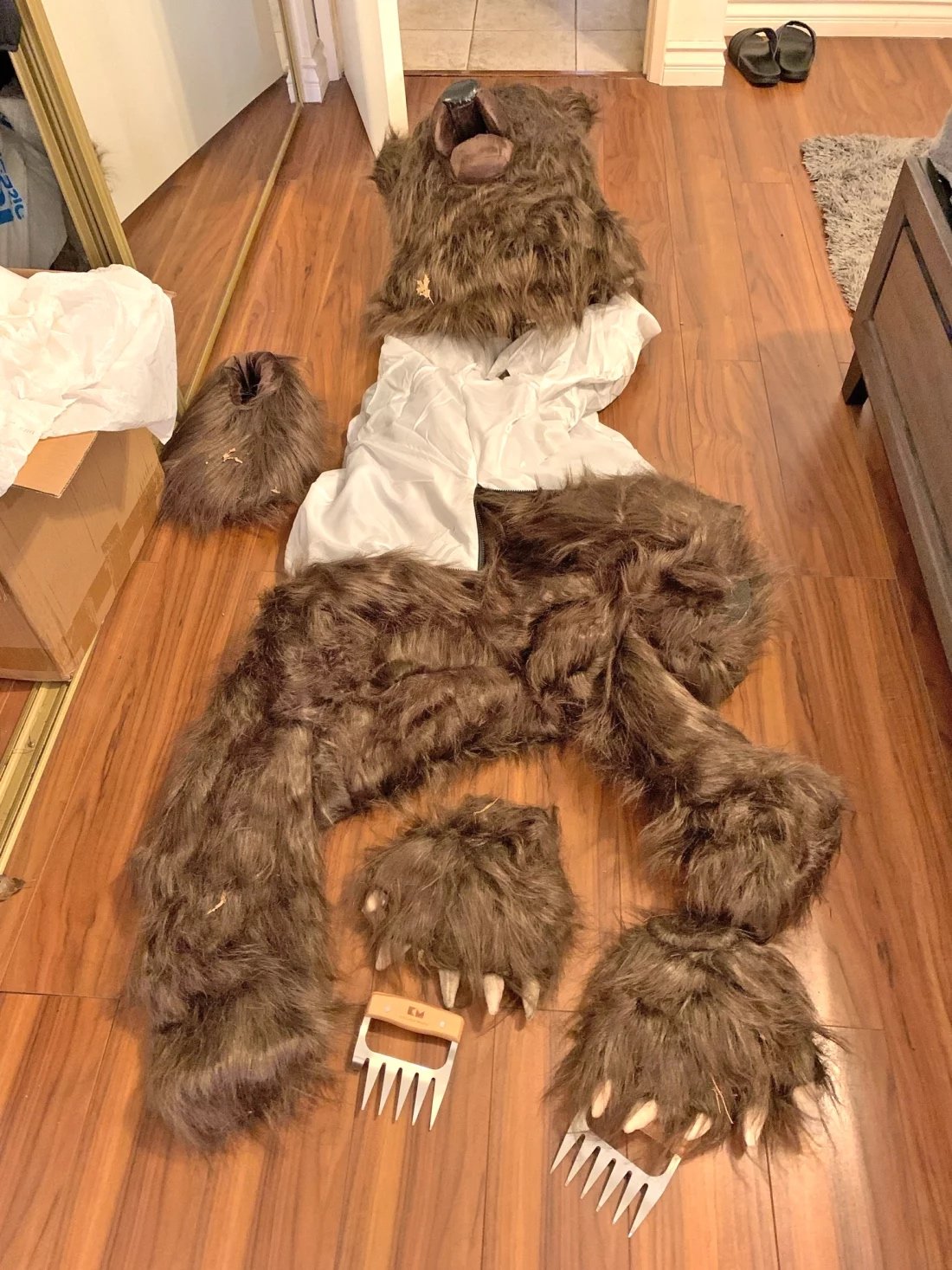
The Violin. “A stack of hundred-year-old photos lead to the discovery of a family treasure hiding in plain sight.”
Strata: Layered Watercolor Gradients

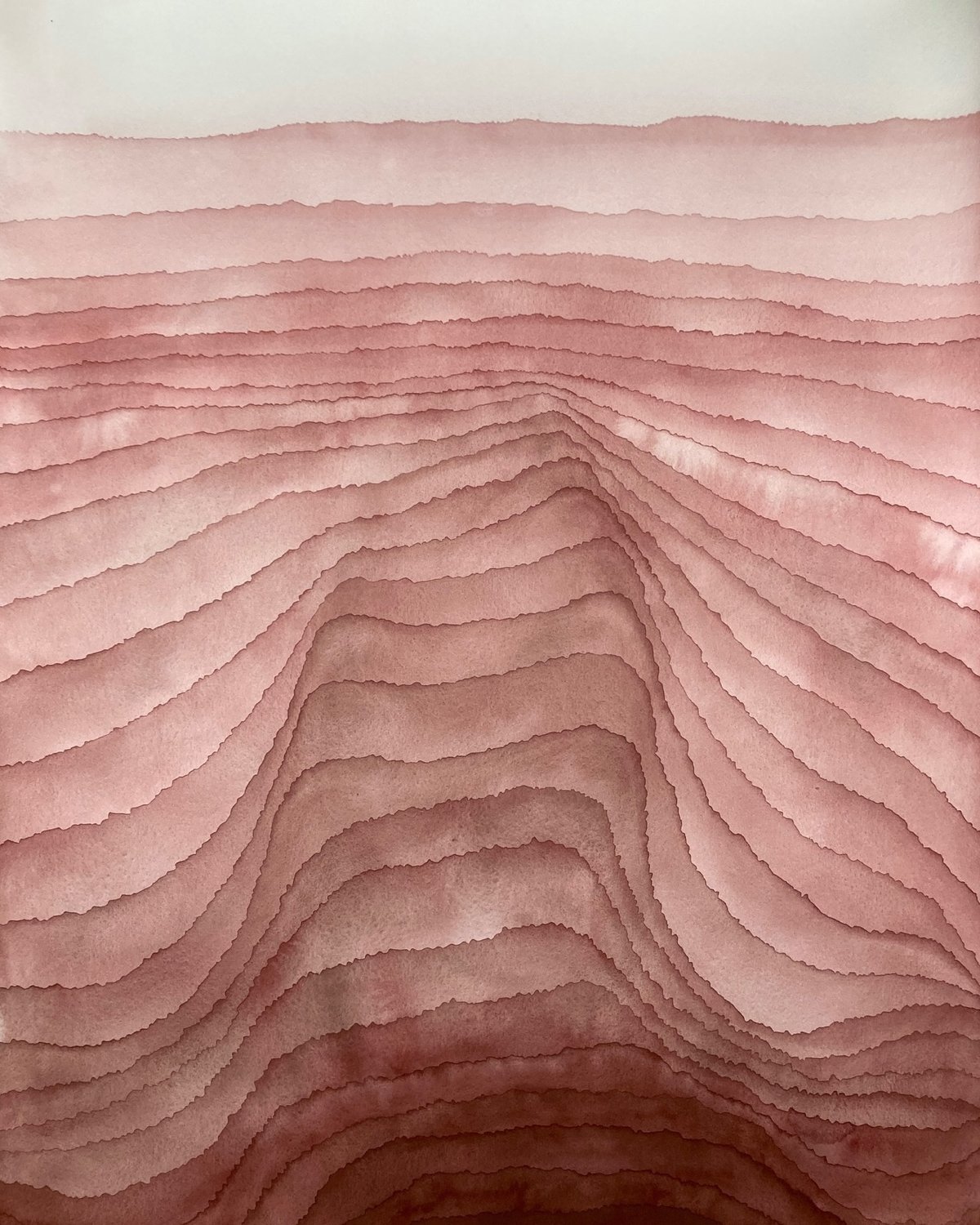

You know me, I love a good gradient. These watercolors are from a series called Strata by Mikael Hallstrøm Eriksen, an artist who uses “repetitive and accumulative mark-making” in his work.
You can check out more of Eriksen’s work on Instagram.The works in the Strata-series are inspired by geological and natural phenomena — sediments, horisons, bodies of water, etc. These works explore a colourful imagery of accumulation, distance and transformation. Within geology and archeology, strata (singular: stratum) refers to layers (of rock, soil, culture etc.) possessing internally consistent characteristics making them distinguishable from each other.
This is how David Copperfield made the Statue of Liberty disappear on live television in 1983. This was a *huge* event in my childhood and I am thrilled to finally learn how it was done.
First Trailer for Star Wars From 1976
In 1976, 20th Century Fox released a teaser trailer for a little film called Star Wars…aka “the story of a boy, a girl, and a universe”.
No James Earl Jones voiceover for Vader, no John Williams score (which wasn’t finished until just two months before the film premiered), but those visuals must have impressed.
Here’s the first teaser trailer for Empire Strikes Back, which features no film footage at all, just concept art drawn by Ralph McQuarrie:
And for the sake of completeness, the teaser trailer for Return of the Jedi, which appeared in theaters before Lucas changed the name from Revenge of the Jedi:
I’ve seen a lot of these bouncing ball videos (balls double until my PC crashes, etc.) but this one is absolutely mesmerizing. So many more of these on Slightly Satisfying’s TikTok.
The Guardian on why they’re not posting on Twitter anymore. “The benefits…are now outweighed by the negatives and…resources could be better used promoting our journalism elsewhere.” (If your org can’t stop, at least post elsewhere first.)
The Threat of Trumpism Is Real. So Is the Need for Rest. “If we don’t seek out pleasure, comfort, companionship, and laughter, numbness becomes our only protection. And fascism thrives when we are dead inside.”
Baby Evacuation Aprons

Today I learned about evacuation aprons, which places like maternity wards use to rescue infants and toddlers in case of emergency or fire. Or as this labor & delivery nurse on Threads put it:
…the goal is to grab your vest and just stuff as many babies as humanly possible in its giant kangaroo pockets before running out the door.
This particular company sells a few different models, like this apron for newborns and this one for larger infants and toddlers that can carry a total weight of 60 lbs. All the aprons are fire-resistant.
There is also something called the Med Sled, which can carry up to 6 infants at a time.

Actually not an Onion article: The Onion Says It Has Bought Infowars, Alex Jones’s Site, Out of Bankruptcy. They’re going to relaunch the site as “a parody of itself” with Everytown for Gun Safety as an advertiser.
I’m a journalist and I’m changing the way I read news. This is how. “I’ll read news, not other people’s reactions to news.”
Jon Batiste Hears Green Day for the First Time
In this video from Pianote, the multi-talented Jon Batiste hears Green Day’s Holiday for the first time (drum & vocals only) and is challenged to come up with a piano accompaniment for it — and he really really gets into it. (How do you find a song that a musical encyclopedia like Batiste has never heard before though?)
These are always so fun to watch — see also Drummer Plays Metallica’s Enter Sandman After Hearing It Only Once. Oh and Green Day’s demastering of Dookie. (via @unlikelywords.bsky.social)
Oooh, Casey Johnston is coming out with a “memoir and manifesto” about weight lifting: A Physical Education: How I Escaped Diet Culture and Gained the Power of Lifting. (I am inching ever closer to taking up lifting myself…)
Huge if true: “Triangles were long believed to be related to squares, but genetic analysis proves that they are actually very pointy circles.”
A New View of the Aftermath of JFK’s Assassination
This is a still frame of a film shot just a few moments after President John F. Kennedy was shot in Dallas, TX in 1963:

From a NY Times story back in September:
For decades Mr. Carpenter’s 8-millimeter snippets of what transpired in Dallas on Nov. 22, 1963, have been a family heirloom. When he died in 1991 at 77, the reel, which included footage of his twin boys’ birthday party, passed to his wife, Mabel, then to a daughter, Diana, and finally to a grandson, James Gates.
A family heirloom! I find it fascinating that bits of history like this keep turning up. What’s the thought process of the sort of person who keeps (culturally, monetarily, investigatorially?) valuable objects like this casually squirreled away for 60 years? How much more of this kind of thing exists and how much of it just gets thrown away? Again, fascinating!
Another interesting facet is the process of verifying the film’s authenticity. I’m sure the auction house did their due diligence, but so did the Times. Malachy Browne works on the Visual Investigations team at the paper, which was tasked with verifying that the film was legitimate. He shared part of their process on Bluesky:
Time: The length of the shadow matches what it should be around that time of day on Nov. 22, 1963, Suncalc tells us.
Location: Where on the route was it taken? The angle of sun also helps to narrow that down: most likely this section of the North Stemmon’s Freeway. https://www.suncalc.org/#/32.8014,-96.8277,15/1963.11.22/13:00/1/3
P.S. The film was sold for $137,500 at auction. (via @kokogiak.bsky.social)
Hey, it’s the Microscope Museum, featuring ‘scopes from the early 1800s to the 1980s. “An antique microscope is a work of art as well as science.”
What Will You Do? “What will you do if men in uniforms arrive in your neighborhood, and an immigrant neighbor gets a knock on the door and is led away in handcuffs? Or if the uniforms are not police uniforms, and there is not even a knock?”
Erin McKean goes down a rabbit hole of WWII resistance diaries, “dipping into the thoughts of people who were also made heartsick and distressed by fascist politics”.
10,946: a Year-Long Post-It Note Animation
10,946 is a mesmerizing stop-motion film by Daren Jannace composed of drawings on Post-It notes. He created 30 drawings a day for an entire year and then animated them: “Set at 30 frames a second, each second represents 1 day.” The animation is accompanied by audio Jannace recorded on his phone during the year.
If you watch the whole thing, you get to experience what a year feels like if days were shrunk down into seconds. (via colossal)
Kenji López-Alt Returns From Beef Dimension With New Sear Method Beyond Human Comprehension. “…he jabbered incoherently about mountains of non-Euclidean tri-tips that needed to be cooked on high for both an instant and a thousand eternities.”
Single Line Mazes


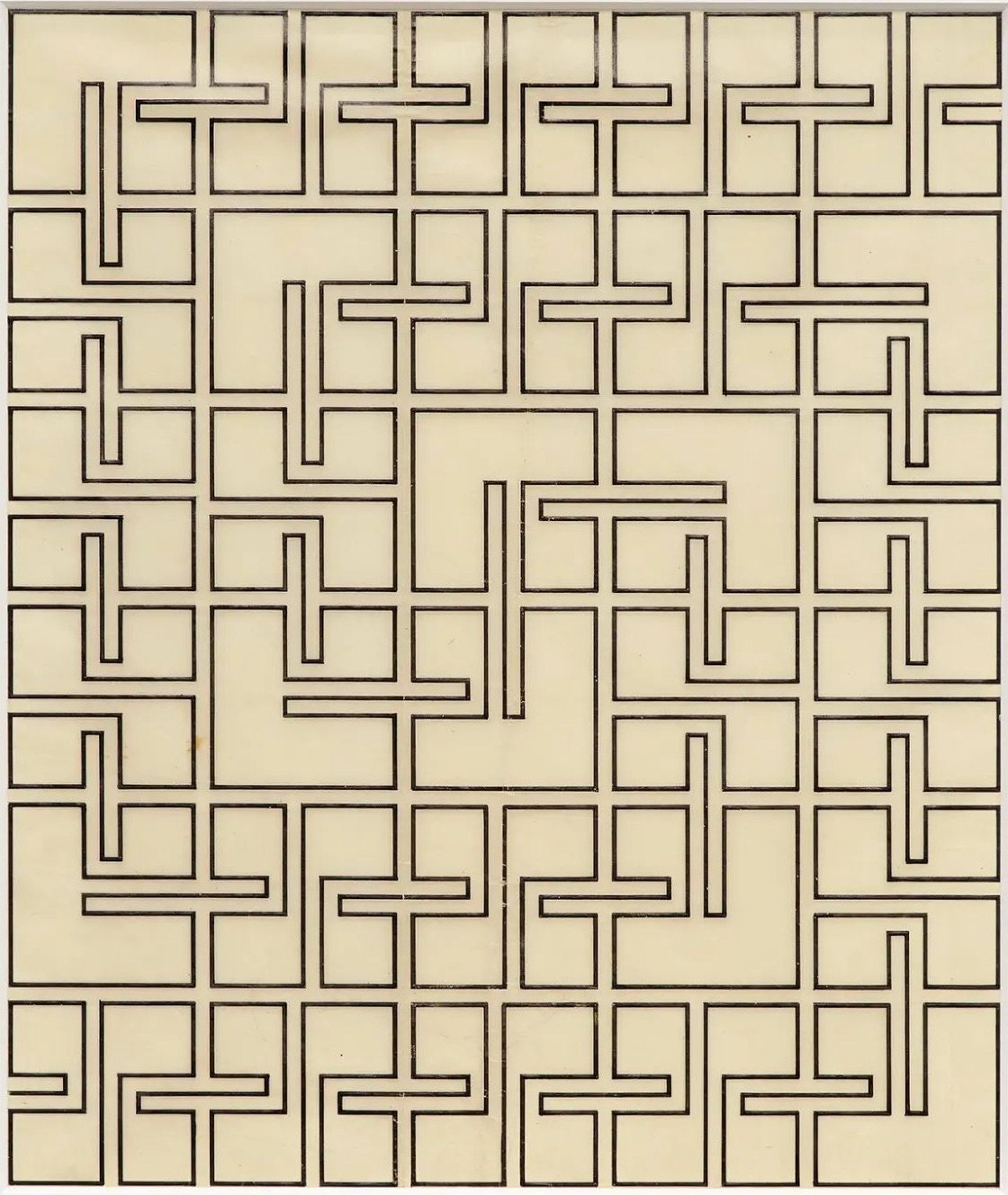

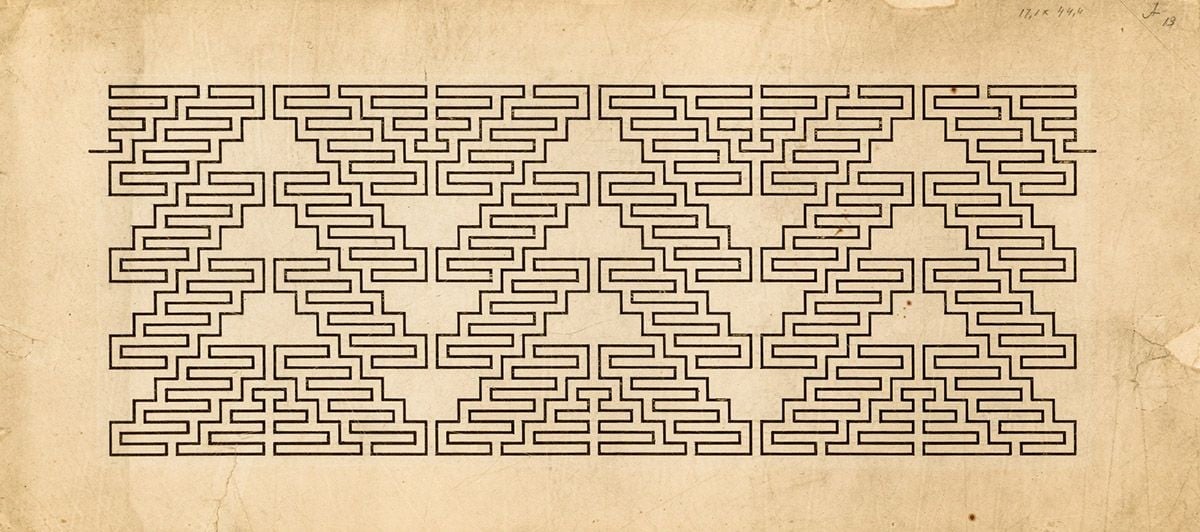

Wacław Szpakowski was a Polish architect and engineer who, over the course of his life and in secret, made a series of drawings of mazes from single continuous lines. From The Paris Review:
The drawings, he explains, “were experiments with the straight line conducted not in research laboratories but produced spontaneously at various places and random moments since all that was needed to make them was a piece of paper and a pencil.” Though the kernels of his ideas came from informal notebooks, the imposing virtuosity and opaqueness of Szpakowski’s final drawings are anything but spontaneous or random. His enigmatic process — how he could draw with such supreme evenhandedness, could make his designs so pristine and yet so intricate — is hinted at only in his few visible erasure marks.
Geoff Manaugh writes at BLDGBLOG:
But the appeal of Szpakowski’s work would appear to extend well beyond the architectural. At times they resemble textiles, weaving diagrams, computer circuitry, and even Arts & Crafts ornamentation, like 19th-century wallpapers designed for an era of retro-computational aesthetics.
Woodworking templates, patent drawings for fluidic calculators, elaborate game boards — the list of associations goes on and on.
Of course, I was reminded of Dom’s challenge to Ariadne to draw a difficult maze in Inception, the light cycles in Tron, and the Etch A Sketch…but to each their own.
You can explore more of Szpakowski’s work at his website, at culture.pl, and at the Miguel Abreu gallery website.
Journalism’s fight for survival in a postliterate democracy. “The work of obtaining facts has a major economic disadvantage against the production of bullshit, and it’s only getting worse.”
‘I was a fool’: Art Garfunkel describes tearful reunion with Paul Simon. “We’ve made plans to meet again. Will Paul bring his guitar? Who knows.”
The Anti-Wonka Candy Factory
In 2011, Magnum photographer Martin Parr visited the Teddy Grays candy factory near Birmingham, England that makes old-fashioned candy with Wonka-esque names — Mint Humbugs, Nutty Brittles, Spearminties. The result is this ultra-charming 20 minute film profile of the company and its candy-making process.
Charmingness evidence, exhibit A: When asked if the company would ever modernize, company director Teddy Gray responds, “Imagine coming to work in the morning and looking at all them faxes, oh no.” Even his modernization references need modernizing.
Charmingness evidence, exhibit B: The lingerie calendar behind Gray as he talks on the phone, and the beefcake calendar behind his daughter in the very next scene.
Charmingness evidence, exhibit C through exhibit ZZZ: Every other scene in the film.
I know 20 minutes for a web video sounds daunting, but it’s worth the while. At the very least, skip to 14:00 and watch how they make “lettered rock”, hard candy sticks with words written on the inside of the candy. As shown in the video, the individual letters start out 3-4 inches high, are arranged into words when rolled up into a massive tube of candy a foot in diameter, and end up a fraction of an inch tall when pulled out into small sticks, like so:

And you thought laying out type for the web was difficult. (thx, nick)
Words from Toni Morrison, Audre Lorde, and James Baldwin about “the vital role that artists play in society generally, and doubly so in the face of authoritarian regimes”.
Marine biologist Dr. Ayana Elizabeth Johnson: “Keep showing up. Join something. Find your people. Bring your superpowers. Be a problem solver. Choose your battles. Nourish joy. Love nature.”
A classic that really made me laugh this morning: Pachelbel’s Canon Played by Train Horns.
200 of the Largest Earth Impact Craters Mapped
I am predisposed to like videos about meteorite craters but this was even more interesting than I anticipated.
A nice example of a crater 2-3 km wide is Rotor Kamm in southern Africa. I should mention that we’re easily into city killer impacts here, in case you’re wondering.
You can explore the Earth Impact Database on their website. (via @michaelhobbes.bsky.social)
The Wired Guide to Protecting Yourself From Government Surveillance. The incoming administration has “vowed to deport millions and jail his enemies. To carry out that agenda, his administration will exploit America’s digital surveillance machine.”
Huh, I didn’t know that the guy who wrote The Curious Garden (one my kids’ favorite books when they were younger) also wrote The Wild Robot — both inspired by the High Line.
Delete Your Account. For Real This Time. “There’s no need for any Trump opponents now to be on X for the same reasons that they’re not on Gab, Gettr, Truth Social, or wherever else.”
Swifties are leaving toxic Twitter for Bluesky after the election. Lots of energy over on Bluesky right now. And Jesus Christ if you’re still on Twitter, it’s past time to move on and join us on Bluesky.
Andor season two will premiere on Disney+ on April 22, 2025 — 12 episodes that take place over a period of four years that lead right up to the events of Rogue One. May the tale of the radicalization of Cassian Andor be a lesson to us all.
“The Quilt Index, originally launched in 2003, is an open access, digital repository of thousands of images, stories and information about quilts and their makers drawn from hundreds of public and private collections around the world.”
Surreal Glitch Pulls



Artist and “pixel pusher” Niall Staines creates these slightly surreal scenes by pulling a 1-px slices to the edge of his images. I’ve used this technique myself but Staines deploys it to great effect here. I love these. You can find more of his work on his website and Instagram.
Climate scientists say we will exceed the 1.5°C temperature threshold for the first time in 2024. “The limits that were set in the Paris agreement are starting to crumble given the too-slow pace of climate action across the world.” A grim milestone.
Why the Work Still Matters. In the face of a “larger-than-normal number of people canceling their subscriptions”, 404 Media explains why their “local reporting from the internet” is more important than ever.
The Big Wait
The Big Wait is a lovely short documentary about a couple who live alone in the middle of nowhere in Western Australia, managing an emergency airport and a small row of guest cottages that are rarely occupied. I got this from Colossal, which calls the film “poetic and dryly humorous”; I cannot improve upon that.
Laura Hazard Owen: We need a Wirecutter for groceries. “What if local news organizations around the country made it part of their mission to help readers compare grocery prices around town?”
Wolf Hall: The Mirror and the Light
In 2015, the BBC & PBS adapted the first two books of Hilary Mantel’s excellent Wolf Hall trilogy into a six-episode miniseries called Wolf Hall, starring Mark Rylance as Thomas Cromwell and Damian Lewis as Henry VIII. Now they’ve made a second miniseries that covers the events of the third book, The Mirror and the Light. Here’s a trailer and synopsis:
The TV sequel picks up in May 1536 after the beheading of Anne Boleyn and follows the last four years of Thomas Cromwell’s life, completing his journey from self-made man to the most feared and influential figure of his time. These are years when Henry’s regime is severely tested by religious rebellion at home, traitors plotting abroad and the threat of invasion. Cromwell must deftly navigate the moral complexities that accompany the exercise of power in this bloody time; he’s caught between his desire to do what’s right and his instinct to survive. The question is: how long can anyone survive under Henry’s brutally mercurial gaze?
Wolf Hall: The Mirror and the Light premieres in the UK on BBC One on Nov 10 but Americans have to wait until March 23, 2025 to watch it on PBS.
I missed this back in May: the Boy Scouts of America is changing its name to Scouting America “in an effort to emphasize inclusion”.
In the three years since its launch, the JW Space Telescope has proven to be wildly popular with astronomers. “Demand for observing time on Webb outpaces supply by a factor of nine.”
An interview with Ridley Scott about Gladiator II, the challenges of working with Denzel Washington & Joaquin Phoenix, Palme d’Or bribery, and AI.
“A Soft Murmur is an online background noise generator designed to help you relax, focus, and tune out unpleasant sounds from your environment.”
I think I might take some time today to read Pema Chodron’s When Things Fall Apart. “How can we live our lives when everything seems to fall apart - when we are continually overcome by fear, anxiety, and pain?”
If you can’t wait until Nov 15, Apple TV+ has uploaded the first five minutes of season two of Silo to YouTube. “Juliette lives.”
Election Grief Is Real. Here’s How to Cope. “You need to be patient with yourself if you’re feeling angry, sad, grieving right now. That’s a normal reaction to a surprising outcome and an outcome that…is going backward and not forward.”
Ran across a song with “741 Hz” in the title and there’s a whole Spotify playlist of similar songs (“a soothing solfeggio frequency that is used by many to let go of negativity and toxic energy”) and ngl they are relaxing.
A Time of Earnestness
Laura Olin’s newsletter of “art, internet, and ideas” is a favorite of mine (subscribe here), and I appreciated her comments from this morning on why sci-fi and fantasy movies work for moments like these.
I’ve never thought of myself as a person who’s particularly into sci fi or fantasy. But on the worst days — and yesterday was one — I find myself thinking of the essential lessons of art in that genre. Maybe because a lot of it is about people in dire situations making stark moral choices for a larger good — and for various reasons World War II parables aren’t really going to do it anymore, at least in America. We saw Rogue One in the theater soon after Trump’s first election and I took some strength from the image of (vague spoilers) Felicity and Diego on the beach, sacrificing themselves to give everything thereafter a chance. I’ve been thinking of the Battlestar Galactica reboot of the W. Bush years, with the fighter pilots touching a portrait of a comrade on a fallen planet on their way out to battle; of Stellan Skarsgard’s speech and “one way out” in Andor, which you must watch; of Katniss touching three fingers to her lips in a salute special to her community, and a crowd of people she can’t even see saluting back; of the fundamental text that is “Why must we go on?” / “Because there’s some good in this world, Mr. Frodo, and it’s worth fighting for.” Is all this cringe? Undoubtedly; but I think we’ve entered a time that requires deep earnestness. (I hope to come back to this paragraph in four years and feel I was being overly dramatic about how bad things might get but I suspect I will not.)
For the last 18 years, Adam Smith has spoken to every Nobel laureate just after they’ve heard the news. “They are genuinely amazed. It takes their breath away, I suppose, in almost all cases.” But sometimes: “I’m kind of busy.”
Here We Go Again
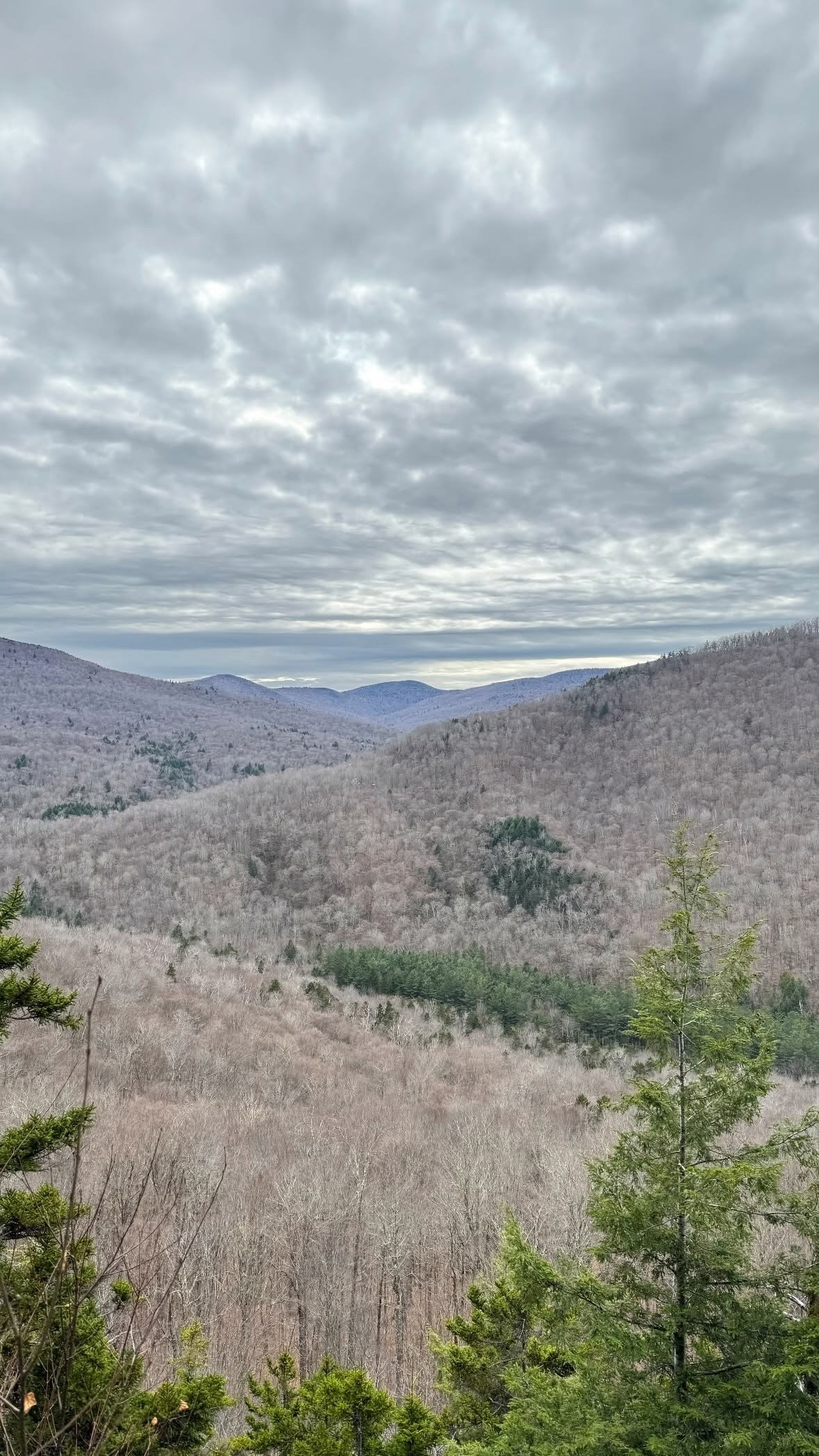
Hey everyone. I don’t have a whole lot to say about the election results and probably won’t talk about it too much here over the coming days. I don’t know what kottke.org’s “role” will be in this altered world we awoke to on Wednesday, but for my own sanity, I need to get back to work here or I will scroll myself into dust. I have no idea if what I’ll be posting is what you’re looking for, but it’s what I’ve got.
If you need some last minute cajoling to not sit out this election, consider these words of warning about abstention in 1968. “Nixon prevailed, thus paving the way for the modern right-wing shift in US domestic and foreign policy.”
Sometimes a post title just reaches right into your introverted soul: The Pleasure of Being Left Alone.
How ill-advised guidelines created a peanut allergy epidemic in the US. “The more prevalent peanut allergies became, the more people avoided peanuts for young children. This, in turn, caused more peanut allergies.”
Tony Hawk posted a photo from the 70s of a girl skateboarding in the rain to his Instagram: “New fav mystery skater unlocked.” Jeremy Markovich tracked down who she was.
Danny MacAskill Rides the Adidas HQ
Trials rider Danny MacAskill finally got the chance to ride the angularly futuristic Adidas campus in Herzogenaurach, Germany.
The first time I got the invite to campus I immediately started riding the place in my mind. Riding all the rooftops, riding all the railings, you know, it’s a really interesting space. Not just anyone can go there! As soon as you see that kind of big overhanging piece of architecture or whatever, you immediately imagine the different things you could do up there. So, it was cool to finally get to come here to actually do it.
A Scottish children’s hospital has a gamer-in-residence who plays w/ patients. “He said that playing Mario Kart has improved the mobility of a patient’s hand and that it was also a useful tool in distracting the children during medical procedures.”
TIL about argonaut octopuses. “Although most octopuses live near the ocean floor and its ample hiding places, argonauts spend their entire lives sailing in the open ocean, just below the surface.”
Wow, more than 40 people have undergone a CAR-T-cell therapy for lupus, most of whom have gone into drug-free remission. “It is too early to declare any of these patients cured for life, but that now seems within the realm of possibility.”
“I did go touch that rock. I didn’t tell anyone…” I live on a road named for a big boulder and didn’t notice it for far too long…
Some profiles of first-time voters who were formerly incarcerated. “I’m carrying all the people that can’t vote in my vote. And that’s an honor.”
I am *very* excited about this: Christian Marclay’s The Clock is going back on display at MoMA. Member previews: Nov 7–9, Nov 10, 2024 through Spring 2025. “The work is both a cinematic tour-de-force and a functioning timepiece.”
The Powerful Density of Hypertextual Writing
The NY Times has had a difficult time covering the 2024 election in a clear, responsible manner. But I wanted to highlight this short opinion piece from the paper’s editorial board, which I’m reproducing here in its entirety:
You already know Donald Trump. He is unfit to lead. Watch him. Listen to those who know him best. He tried to subvert an election and remains a threat to democracy. He helped overturn Roe, with terrible consequences. Mr. Trump’s corruption and lawlessness go beyond elections: It’s his whole ethos. He lies without limit. If he’s re-elected, the G.O.P. won’t restrain him. Mr. Trump will use the government to go after opponents. He will pursue a cruel policy of mass deportations. He will wreak havoc on the poor, the middle class and employers. Another Trump term will damage the climate, shatter alliances and strengthen autocrats. Americans should demand better. Vote.
What makes this piece so effective is its plain language and its information density. This density is a real strength of hypertext that is often overlooked and taken for granted. Only 110 words in that paragraph but it contains 27 links to other NYT opinion pieces published over the last several months that expand on each linked statement or argument. If you were inclined to follow these links, you could spend hours reading about how unfit Trump is for office.
A simple list of headlines would have done the same basic job, but by presenting it this way, the Times editorial board is simultaneously able to deliver a strong opinion; each of those links is like a fist pounding on the desk for emphasis. Lies, threat, corruption, cruel, autocrats — bam! bam! bam! bam! bam! Here! Are! The! Fucking! Receipts!
How the links are deployed is an integral part of how the piece is read; it’s a style of writing that is native to the web, pioneered by sites like Suck in the mid-90s. It looks so simple, but IMO, this is top-notch, subtle information design.
Based on Our Election Forecast, We Are 100 Percent Sure Anything Could Fucking Happen. “In 1 percent of simulations, Trump and Harris settle the presidency via cage match. In 2 percent of simulations, they open a quaint bakery in Vermont for dogs…”
How Are You Doing?
No seriously, how is everyone doing today? We’re coming down to the wire on the most cuckoo bananapants presidential election campaign in recent memory. There’s so much at stake and there are so many unknowns, a potent cocktail for anxiety. If that’s where you are right now, I hope you know you’re not alone. If you’re feeling confident, that’s great and I’m happy for you. If my Instagram feed is any indication, many of you have already voted and are volunteering to knock on doors, phone bank, or to cure ballots in swing states — thanks so much for doing that! (Greg Pak’s list of last minute actions is a good place to start if you want to pitch in.)
Me? Last week was a rough one — lots of anxiety about the election and other things. I’m feeling better this morning; I got out for some exercise this weekend, spent some really nice time with my son, and generally kept social media at arm’s length. Even though it’s pretty cold here today, I’m heading out for a bike ride this afternoon to load up on some good dopamine. I started season two of The Diplomat last night and it seems to have picked up right where it left off last season — the perfect diversionary viewing for me.
But I’m also struggling to work out what to post here this week. I am very nearly done with anything political in nature (I don’t want to contribute to doomscrolling) but posting anything else at this critical juncture, when people’s actual lives and freedoms are on the line, seems frivolous. I suppose I’ll figure it out, but heads up: things might be a little lighter than usual around here — or maybe the opposite? We’ll see.
In the meantime, if you don’t mind sharing, let us know how you’re doing in the comments.
Type Revival for Film & TV. “Type revival involves recreating period lettering and typography as digital typefaces.”
Letter of Recommendation: DRM-free Audiobooks From Libro.fm
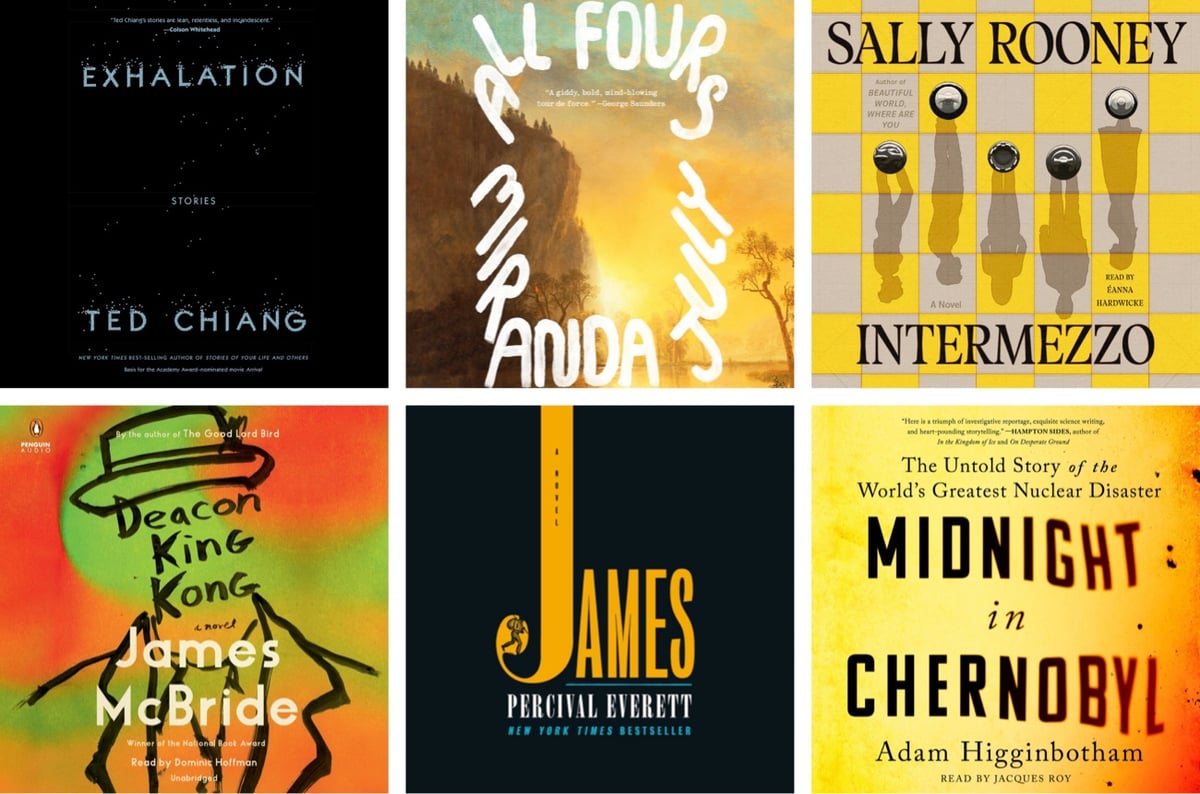
Over the past several months, I’ve settled into a routine that involves reading one book at a time on paper or on the Kindle and listening to one book on audiobook. This way, I can switch back and forth without feeling like I am abandoning one book for the other. Right now, I am most of the way through James by Percival Everett on audiobook and just (finally!) started Craig Mod’s fine-art edition of Things Become Other Things. (Both are about very different kinds of journeys.)
For the last three years, I’ve been been getting my audiobooks through Libro.fm. You can listen through their app or download DRM-free mp3 or m4b files to listen in the app of your choice. They are a social purpose corporation, 100% employee owned, and partner with local bookstores to offer audiobooks & share profits. They don’t have every title because of Audible’s strategy of locking up exclusives (like Emily Wilson’s translations of The Iliad and the Odyssey), but they have most of what you’d want to read. They also make it easy to gift audiobooks to friends and family (and I suppose, enemies and strangers if you want?)
Just in the past few months, I’ve listened to:
- All Fours by Miranda July. This is one of those books that’s better as an audiobook. July is an actress as well as an author and the audiobook is more like a performance than a reading.
- James by Percival Everett. Already mentioned this one, but the narration by Dominic Hoffman is superb and emphasizes some of the vernacular differences that are key to the story that might be tougher to express in print. (Hoffman also narrated James McBride’s Deacon King Kong and Ted Chiang’s Exhalation.)
- Midnight in Chernobyl by Adam Higginbotham. This is the definitive account of the Chernobyl nuclear power plant disaster and a great companion to HBO’s Chernobyl miniseries.
- The First Fifteen Lives of Harry August by Claire North. A fun sci-fi story that presents an alternative version of Groundhog Day-style time travel.
You can purchase individual audiobooks through the site or sign up for a membership where you get one free credit a month and each credit to good for one audiobook, regardless of price.
When you buy through links on kottke.org, I may earn an affiliate commission. Thanks for supporting the site!
Iceland embraced a shorter work week. Here’s how it turned out. “Iceland’s economy is outperforming most European peers after the nationwide introduction of a shorter working week with no loss in pay, according to research released Friday.”
No Fate But What We Make
This is a great piece by Jamelle Bouie: Donald Trump Is Done With Checks and Balances. The first half is a short lesson on how our present Constitution came to be, which might differ slightly from the version you learned in school:
It is important to remember that the Constitution was neither written nor ratified with democracy in mind. Just the opposite: It was written to restrain — and contain — the democratic impulses of Americans shaped in the hothouse of revolutionary fervor.
“Most of the men who assembled at the Constitutional Convention in Philadelphia in 1787 were also convinced that the national government under the Articles of Confederation was too weak to counter the rising tide of democracy in the states,” the historian Terry Bouton writes in “Taming Democracy: ‘The People,’ the Founders, and the Troubled Ending of the American Revolution.”
The second part of the piece plainly and succinctly lays out the stakes of a second Trump presidency (emphasis mine):
America got lucky. It won’t get lucky again. Free of the guardrails that kept him in place the first time, affirmed by the Supreme Court and backed by allies and apparatchiks in the conservative movement, Trump will merge the office of the presidency with himself. He will shake it from its moorings in the Constitution and rebuild it as an instrument of his will, wielded for his friends and against his enemies. In doing so, he will erode the democratic assumptions that undergird our current constitutional order. And he will have the total loyalty of a Republican Party that itself is twisting and abusing the counter-majoritarian features of the American system to undermine and unravel democracy in the states it controls.
What a sentence that is.
See also The Guardrails Failed. Now It’s Down to Us., also by Bouie.
We don’t, in 2024, hear much talk of guardrails anymore. And for good reason. The guardrails failed. Every single one of them. The Republican Party failed to police its own boundaries, welcoming Trump when it should have done everything it could to expel him. The impeachment process, designed to remove a rogue president, was short-circuited, unable to work in a world of rigid partisan loyalty. The criminal legal system tried to hold Trump accountable, but this was slow-walked and sabotaged by sympathetic judges (and justices) appointed by Trump or committed to the Republican Party.
When the states tried to take matters into their own hands, citing the clear text of Section 3 of the 14th Amendment, a Republican-appointed majority on the Supreme Court stepped in to rewrite the amendment, turning a self-executing prohibition on insurrectionists in office into a mechanism that required a congressional vote those justices knew would never come.
The newest book from Atlas Obscura: Wild Life: An Explorer’s Guide to the World’s Living Wonders. “Learn how dung beetles navigate by the stars, and trees communicate through their roots.”
A New Visualization of the Atomic Nucleus
A pair of physicists from MIT and Jefferson Lab and an animator have created a new visualization of the atomic nucleaus.
For the first time, the sizes, shapes and structures of nuclei in the quantum realm are visualized using animations and explained in the video.
The video also establishes what appears to be a new unit of measure with an adorable name, the babysecond:
To better define the velocities of particles at such small distance scales, we establish the baby second as 10^-23 seconds. A photon moving at the speed of light crosses three femtometers (a bit more than the radius of oxygen-16) in one baby second.
Crows hold grudges. “When a murder of crows singles out a person as dangerous, its wrath can be alarming, and can be passed along beyond an individual crow’s life span of up to a dozen or so years, creating multigenerational grudges.”




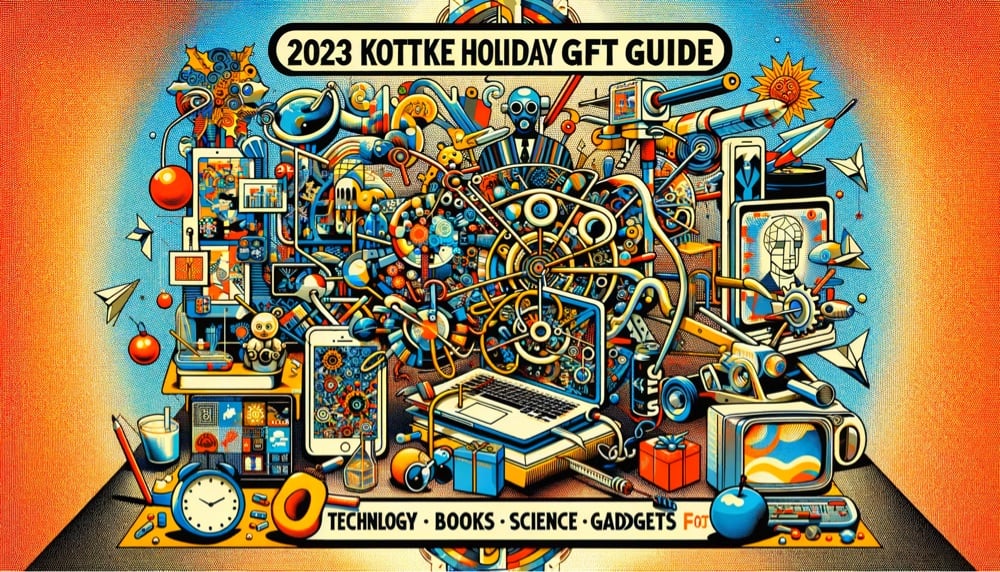









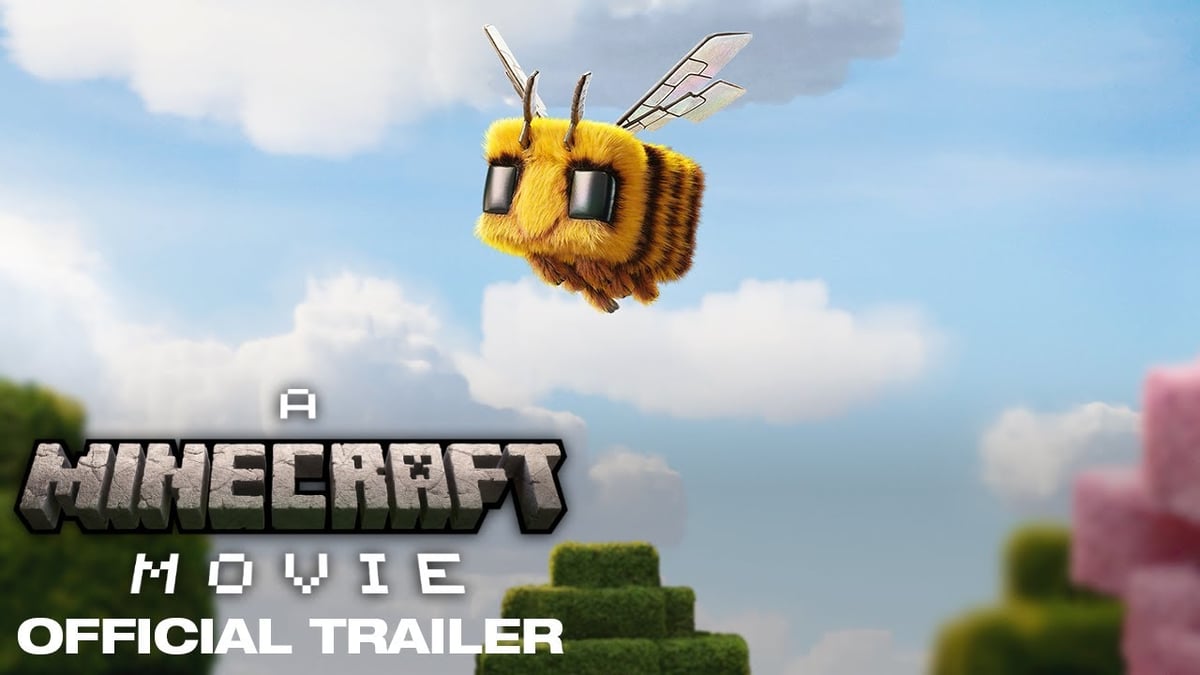
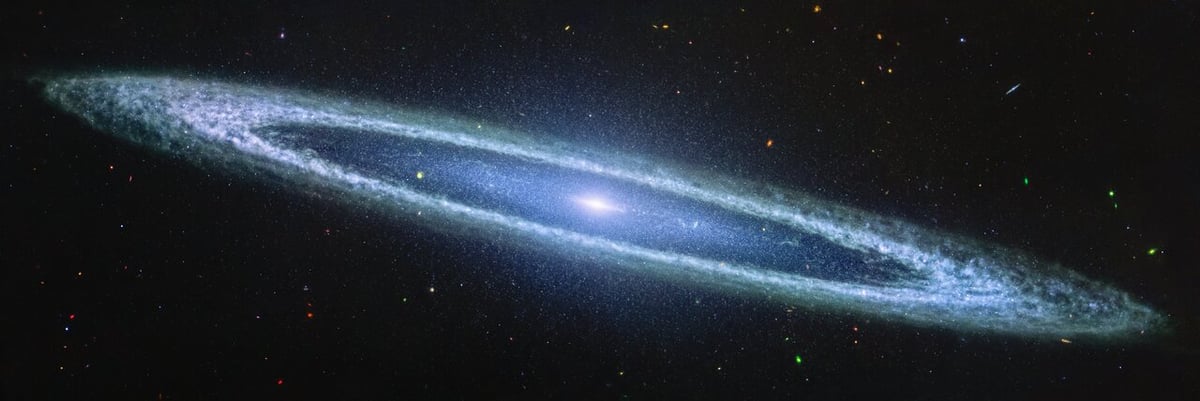




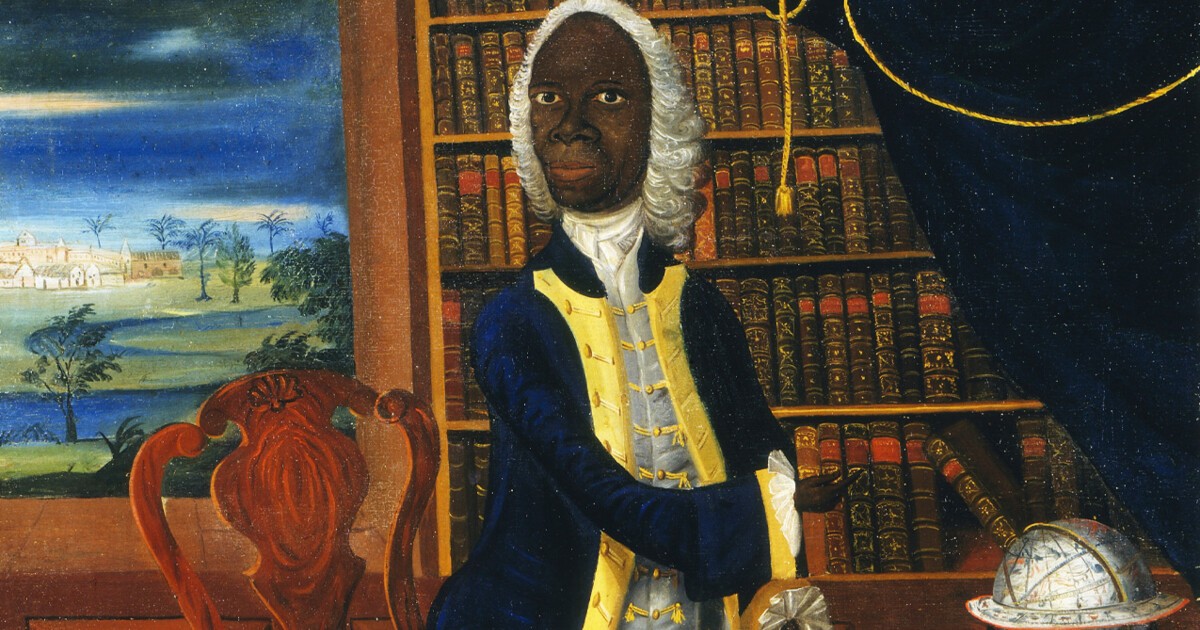





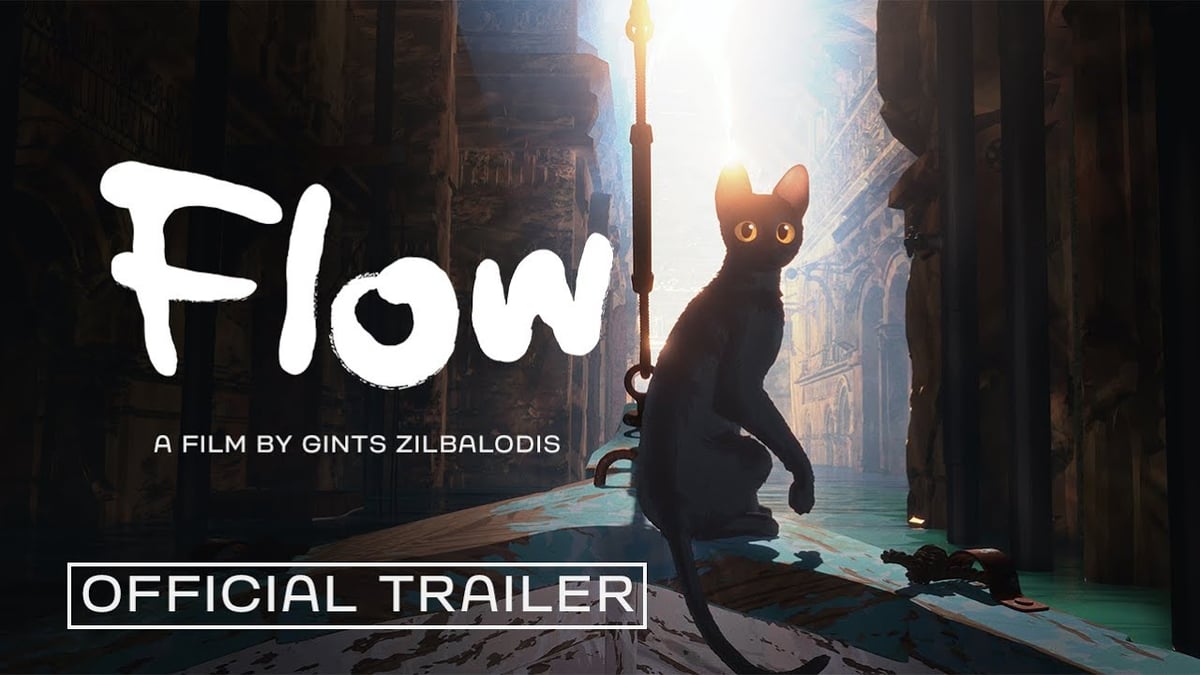








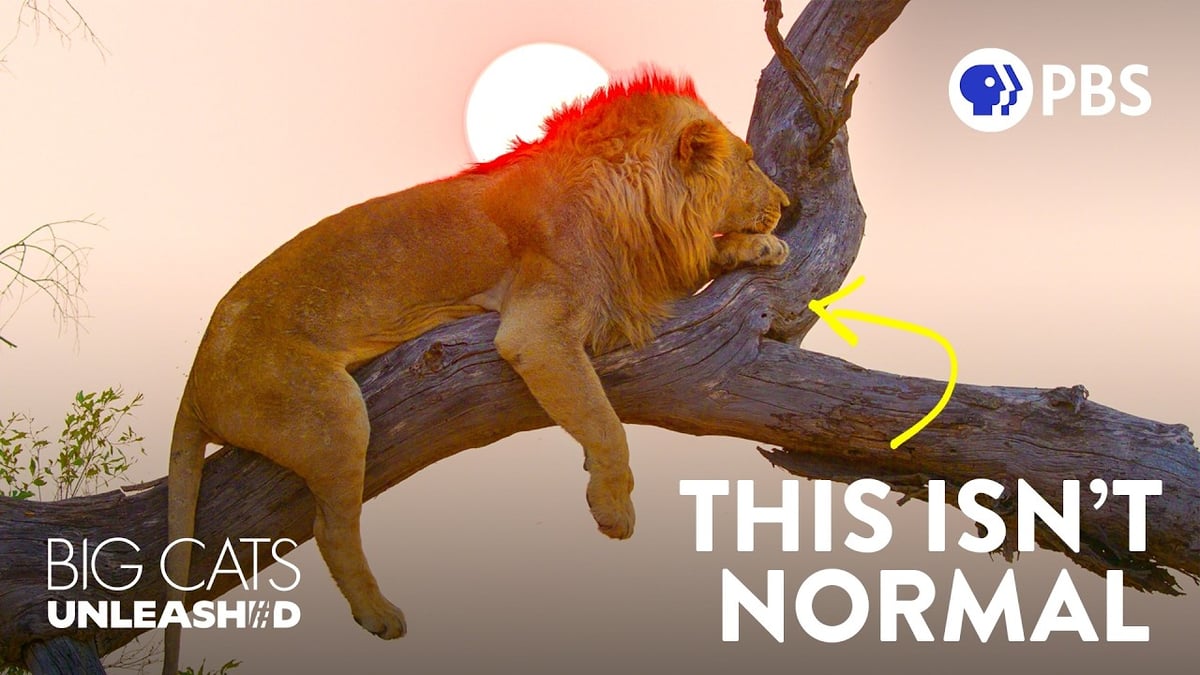

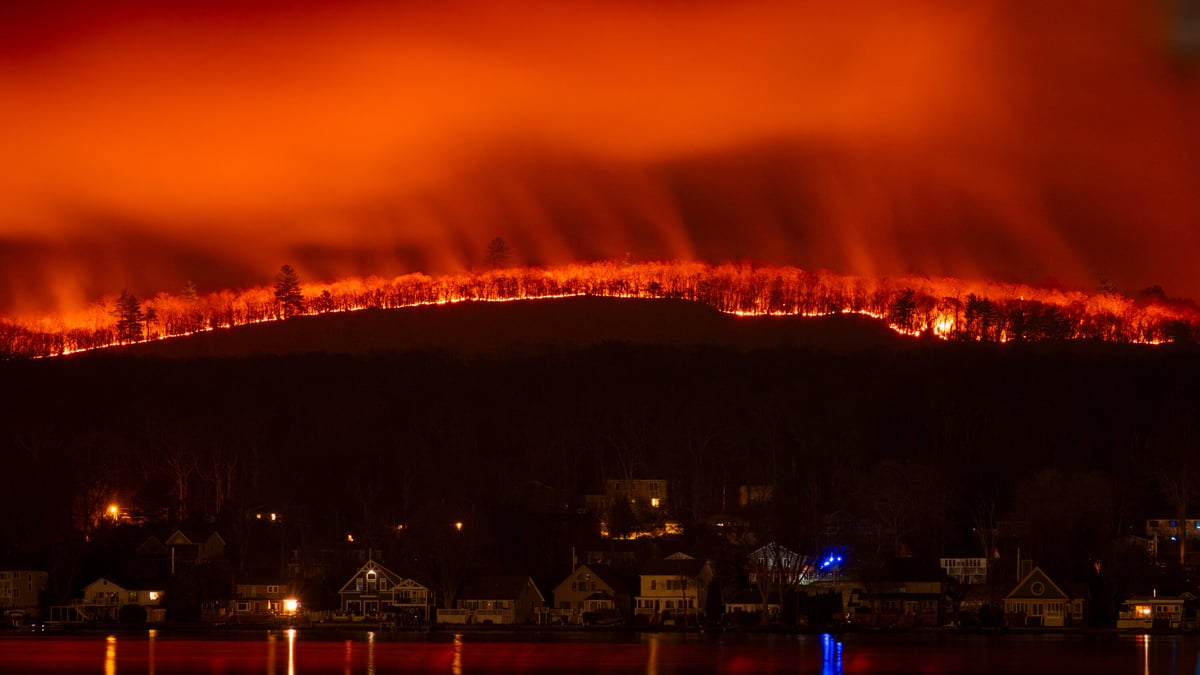







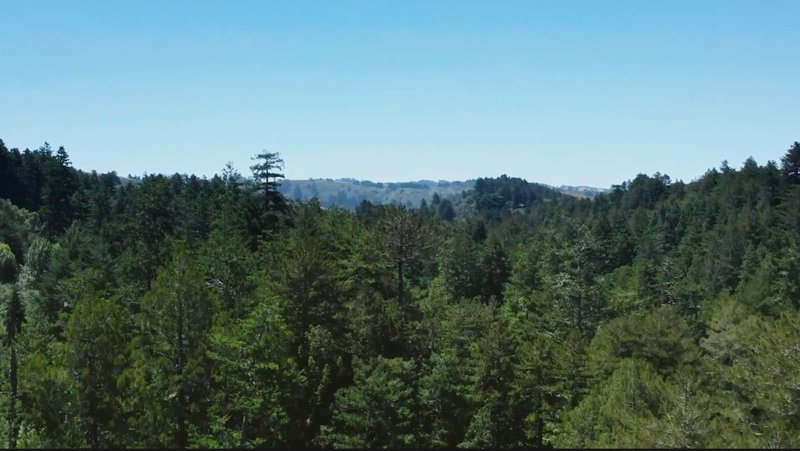

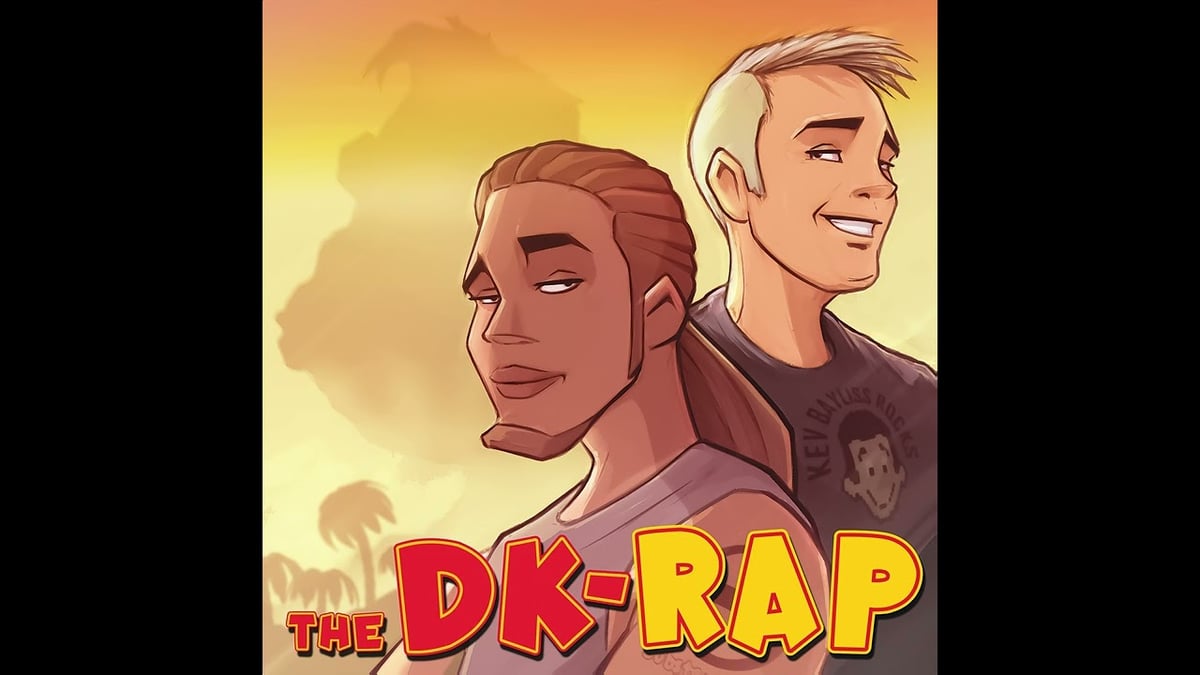

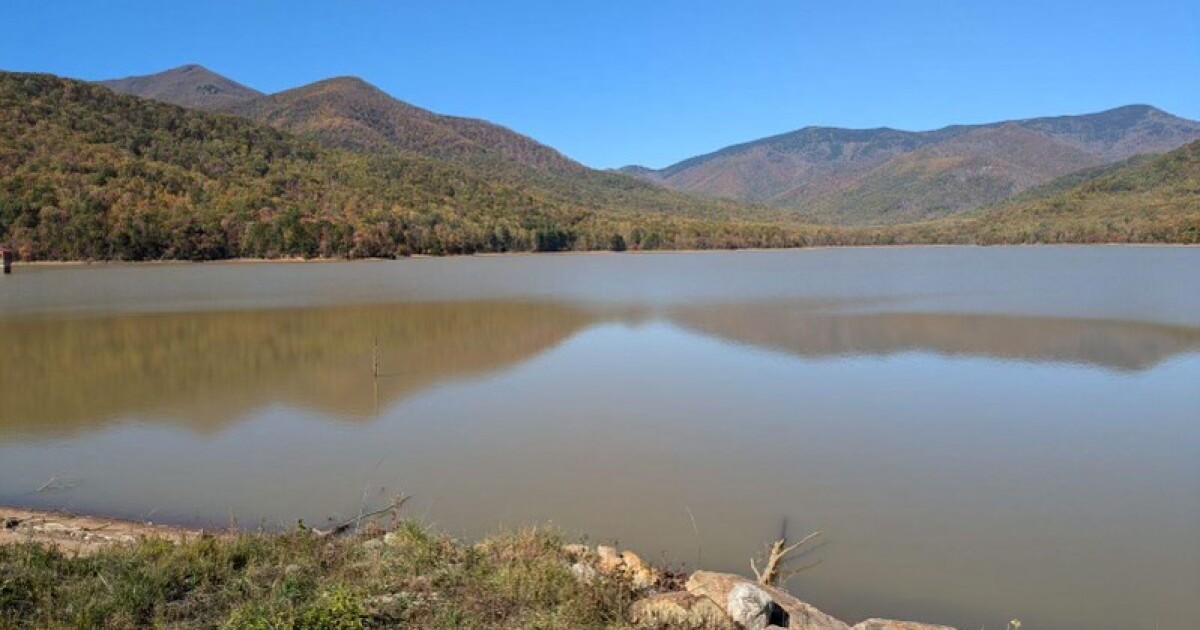



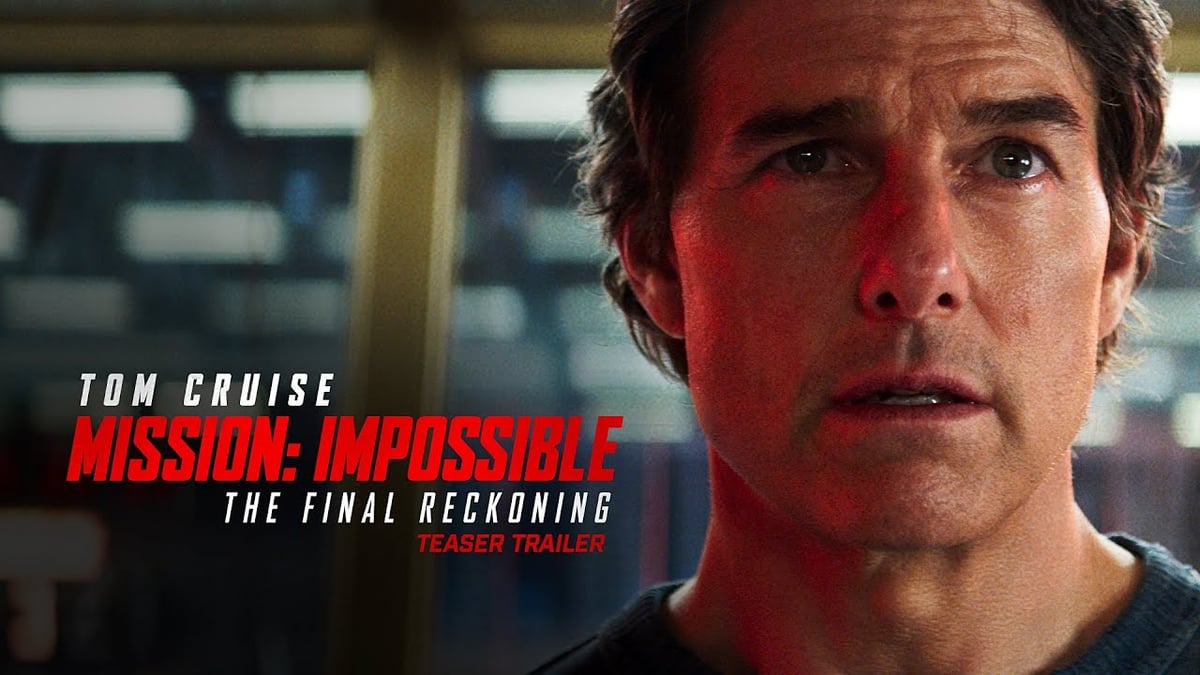



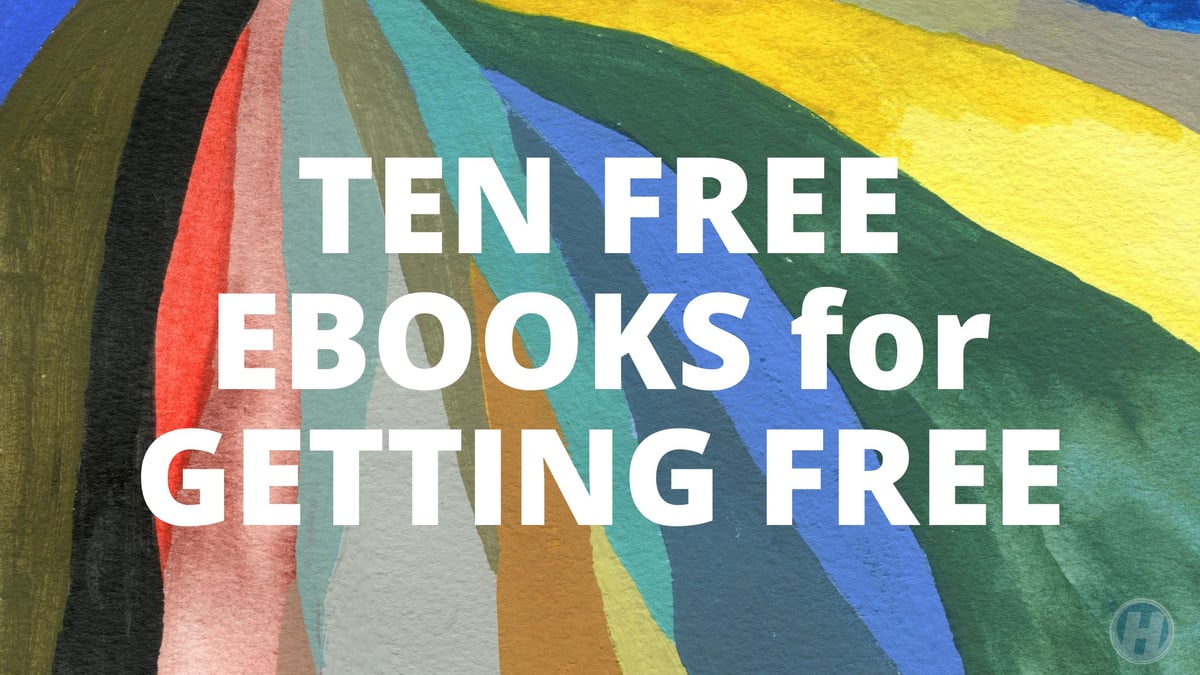





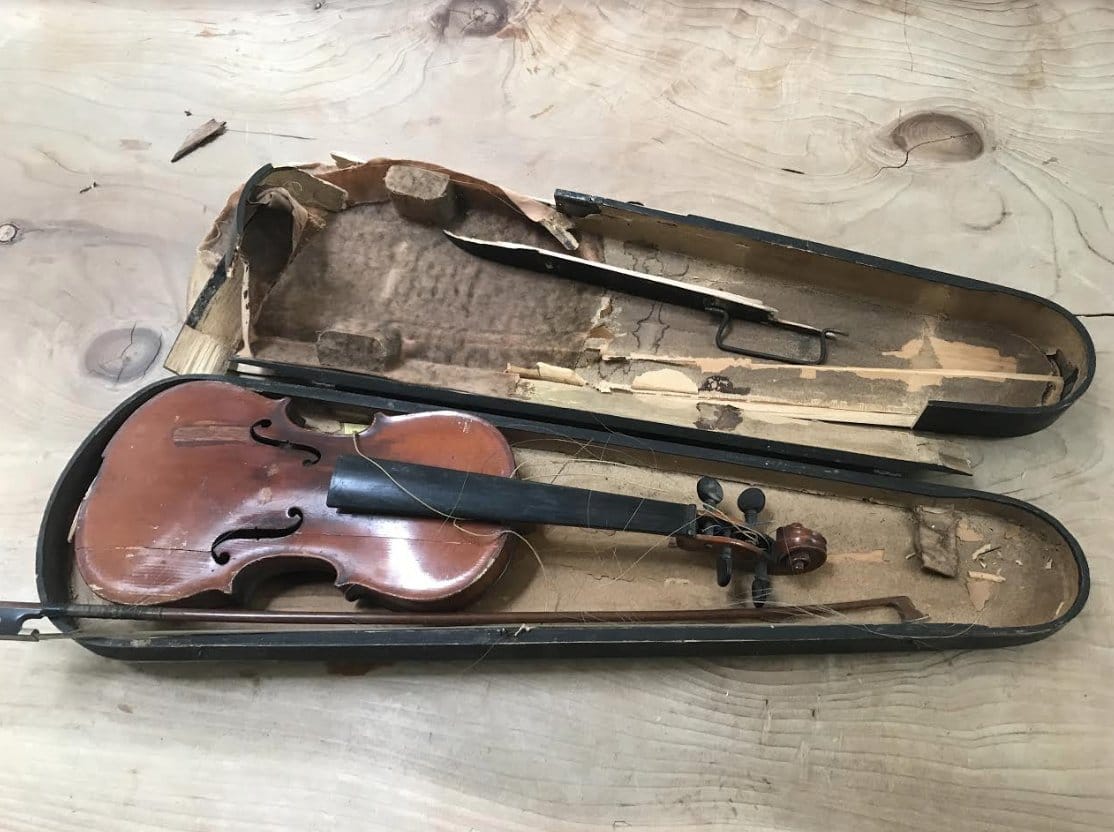

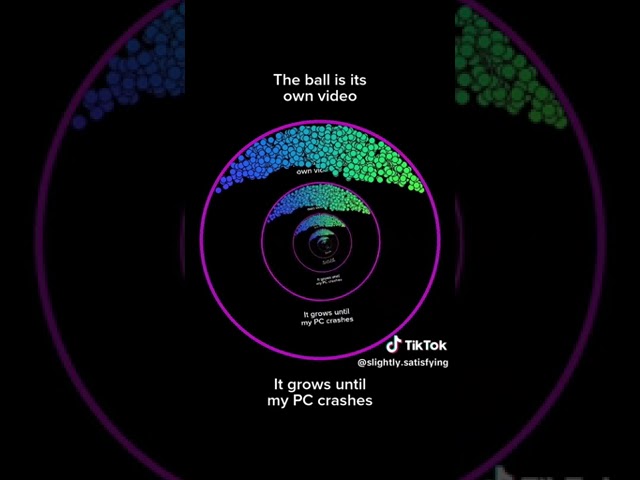









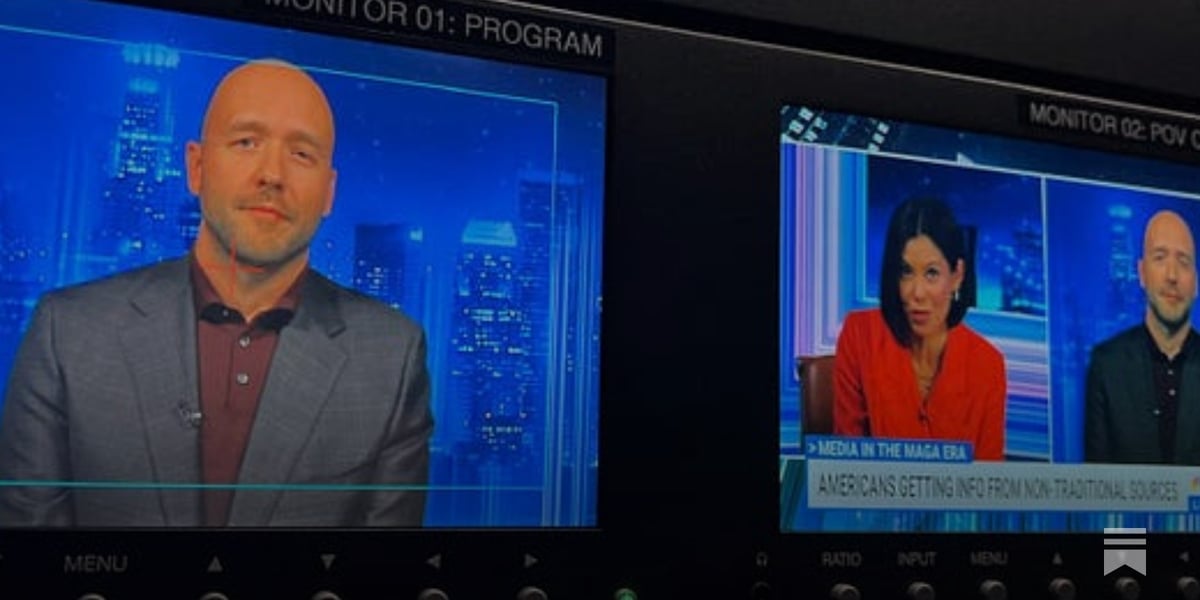
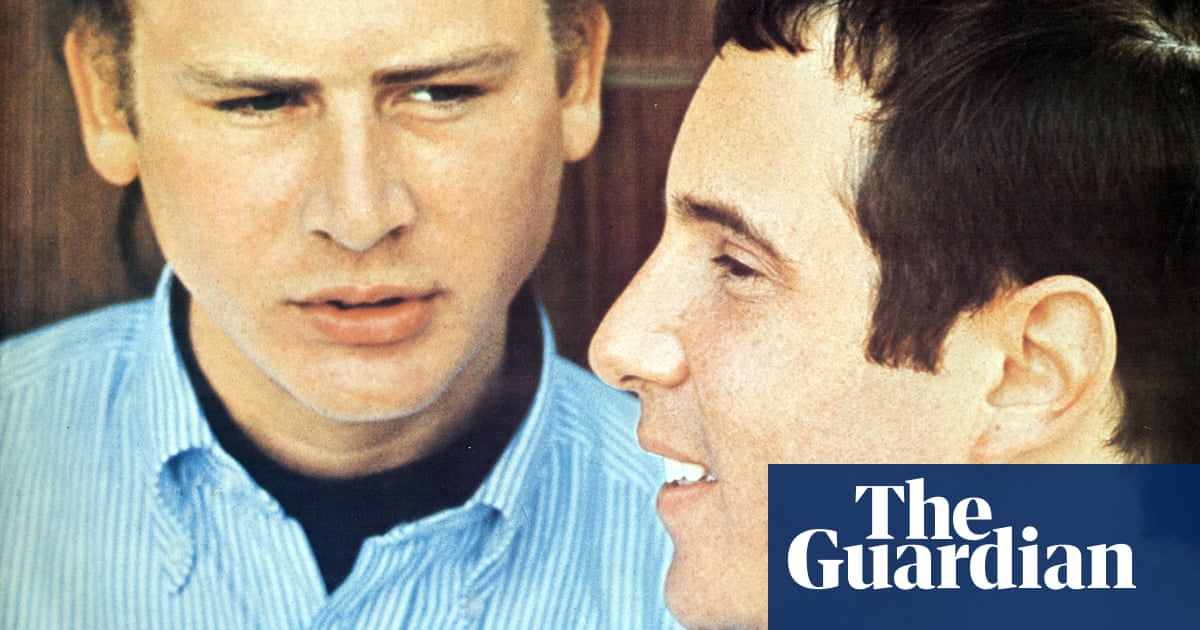

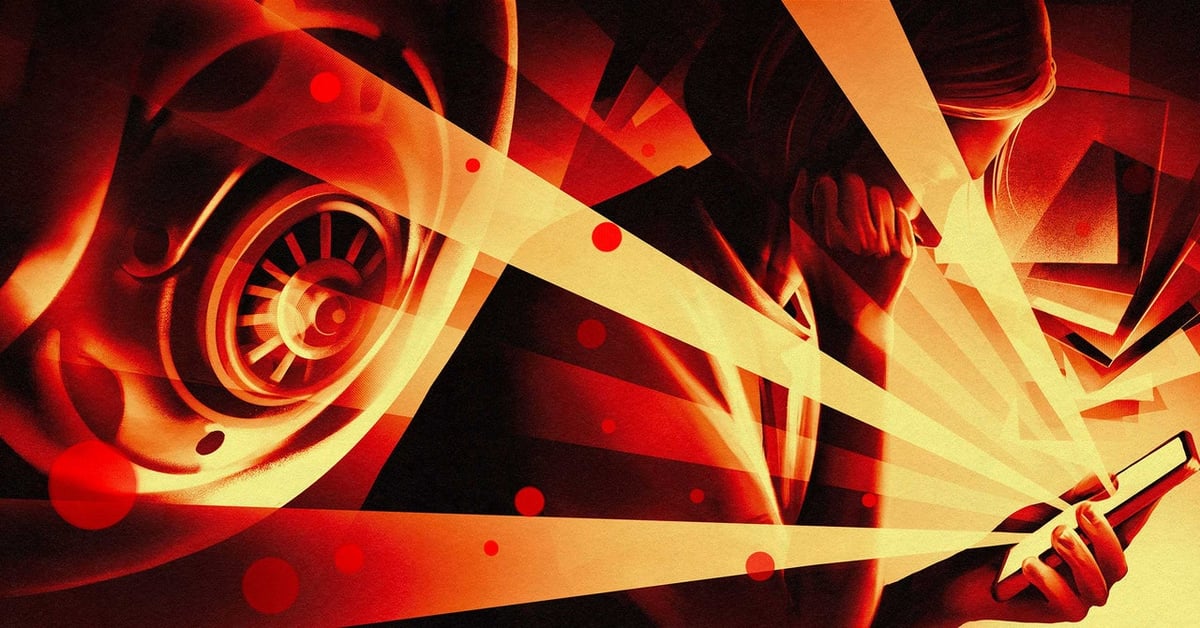
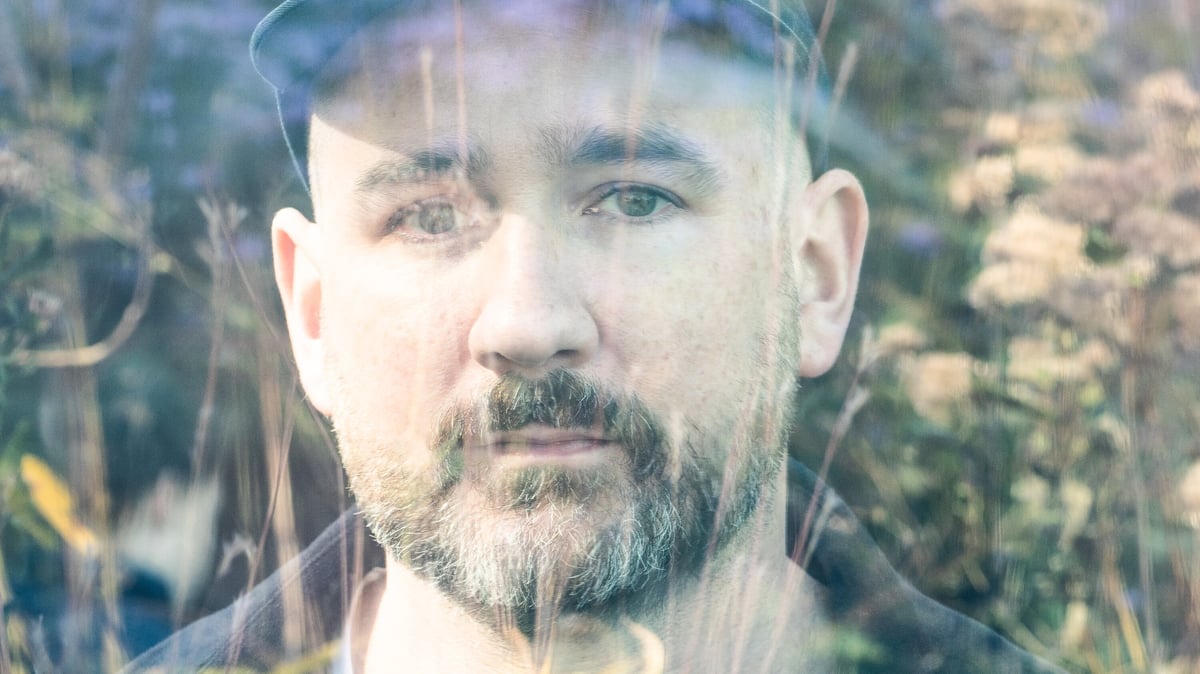




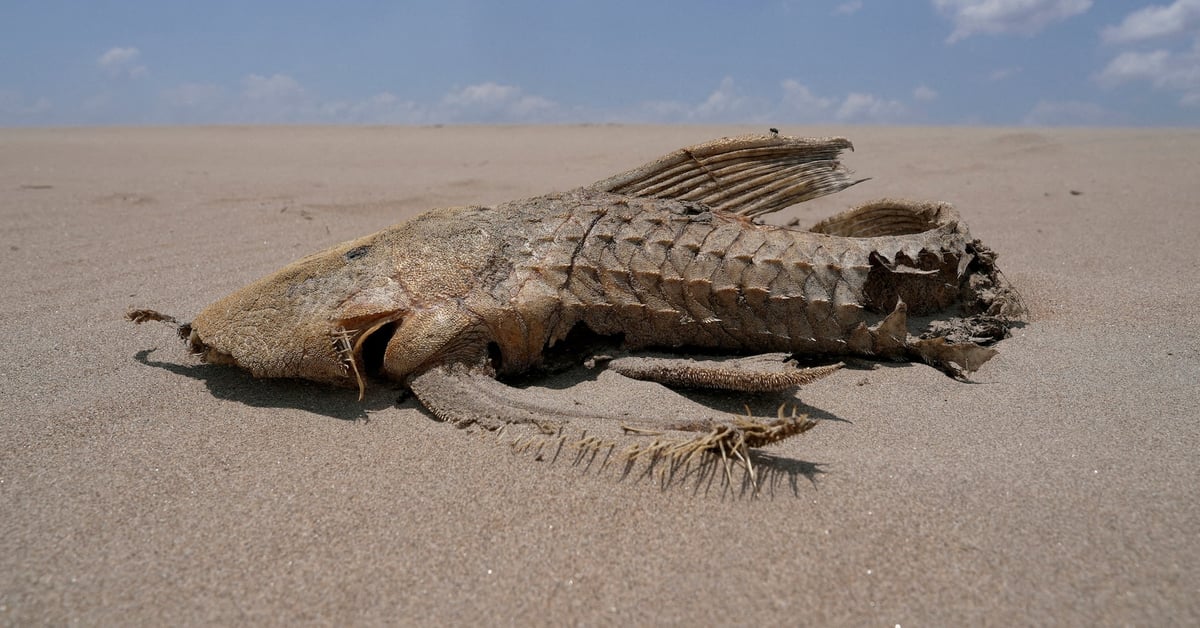
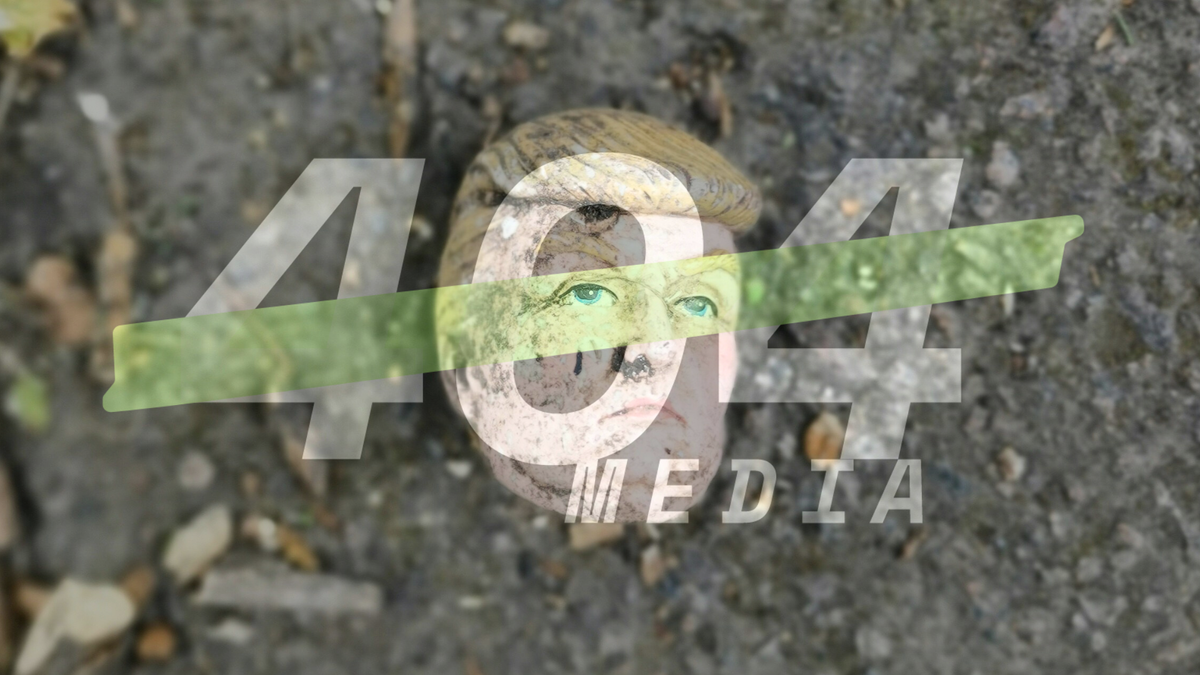




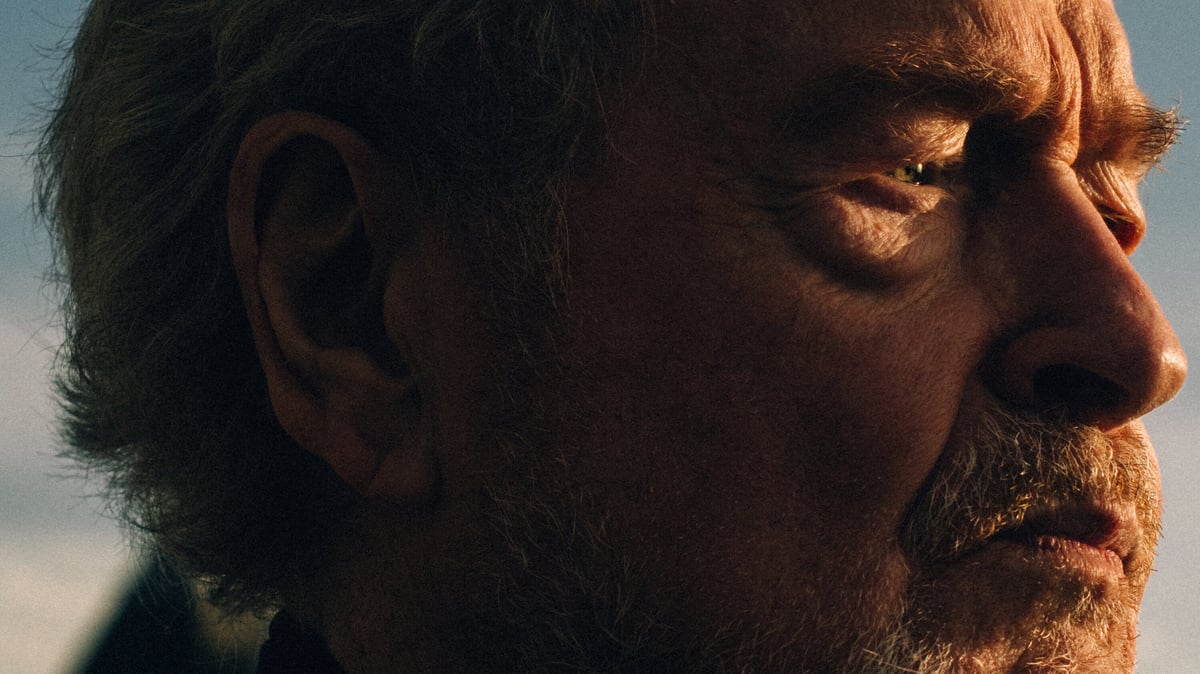




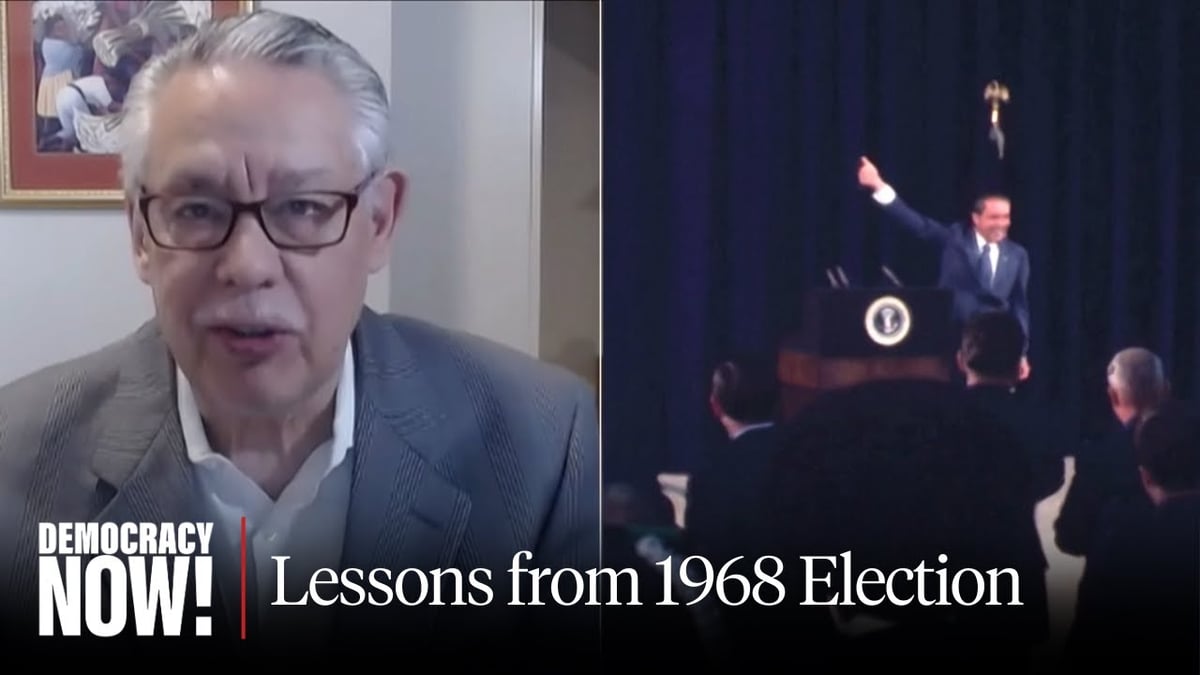


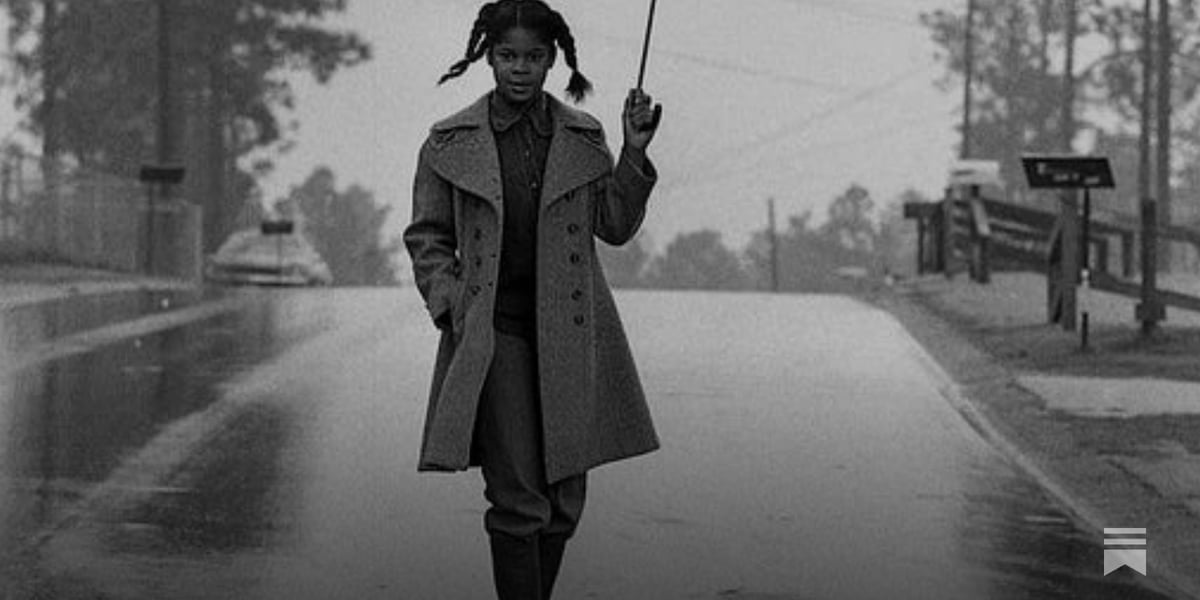


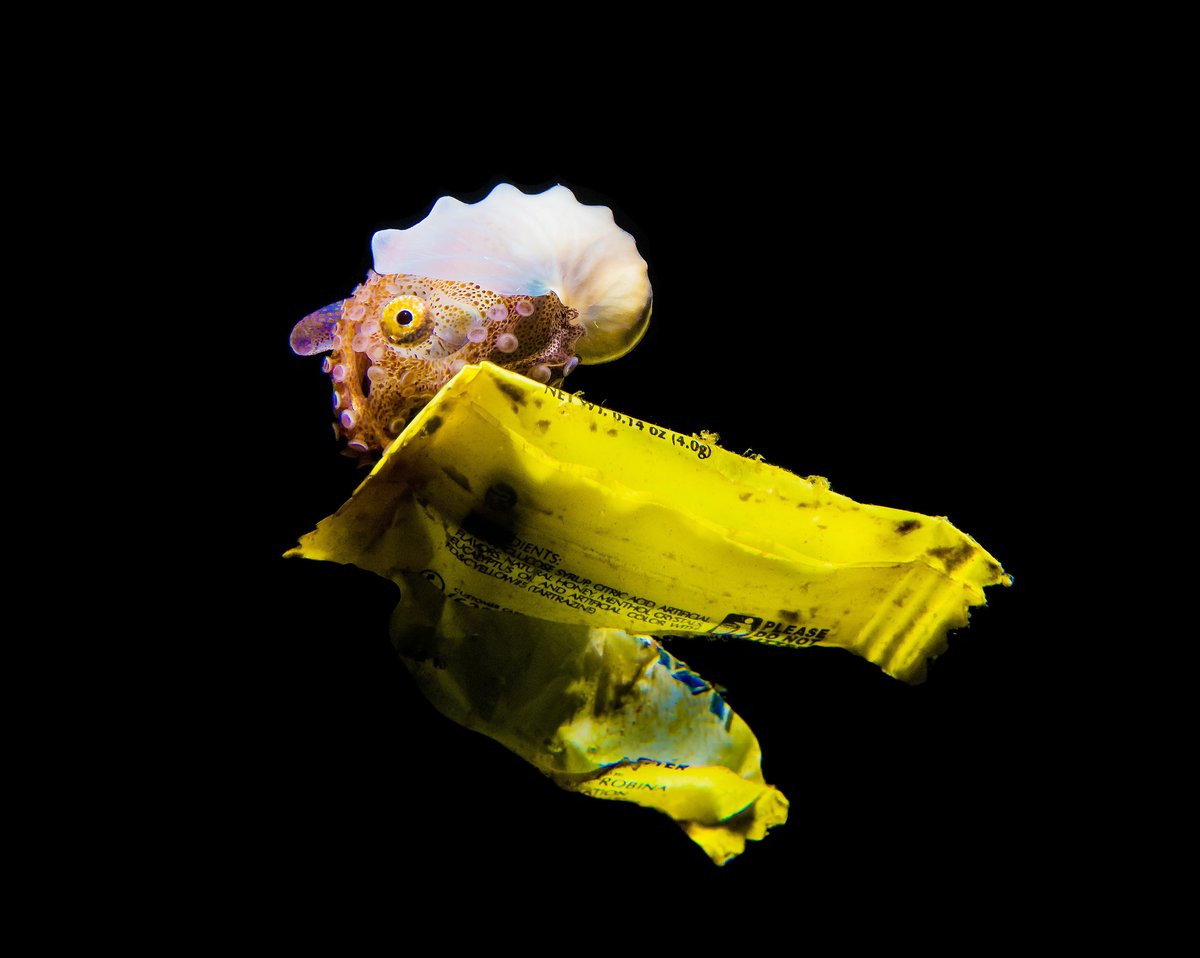
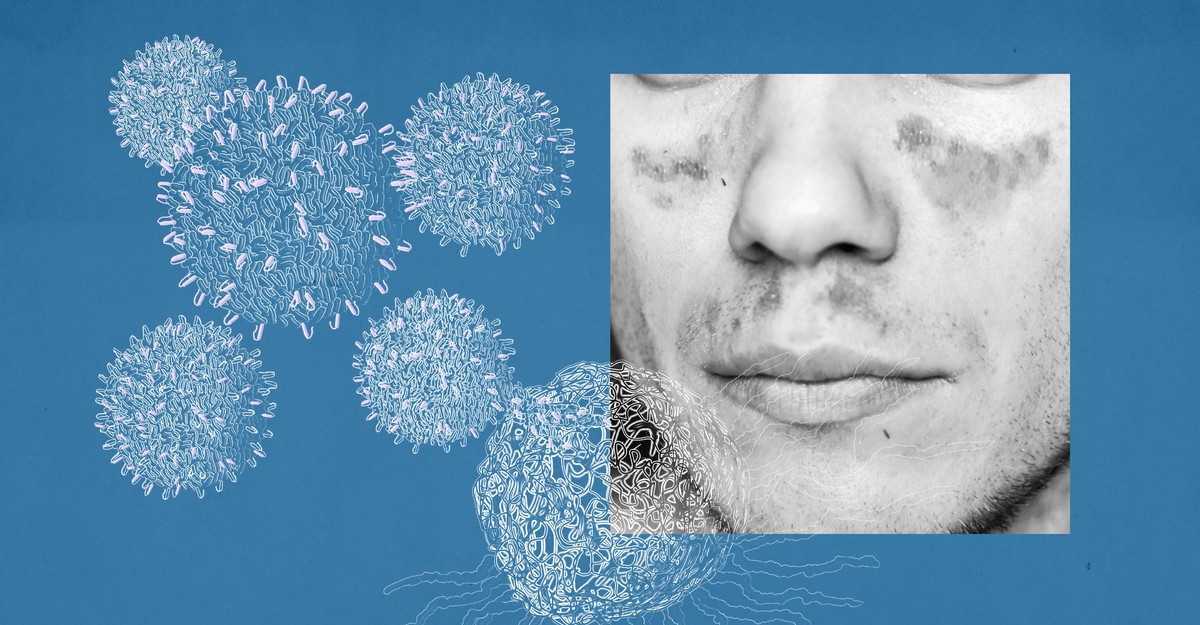

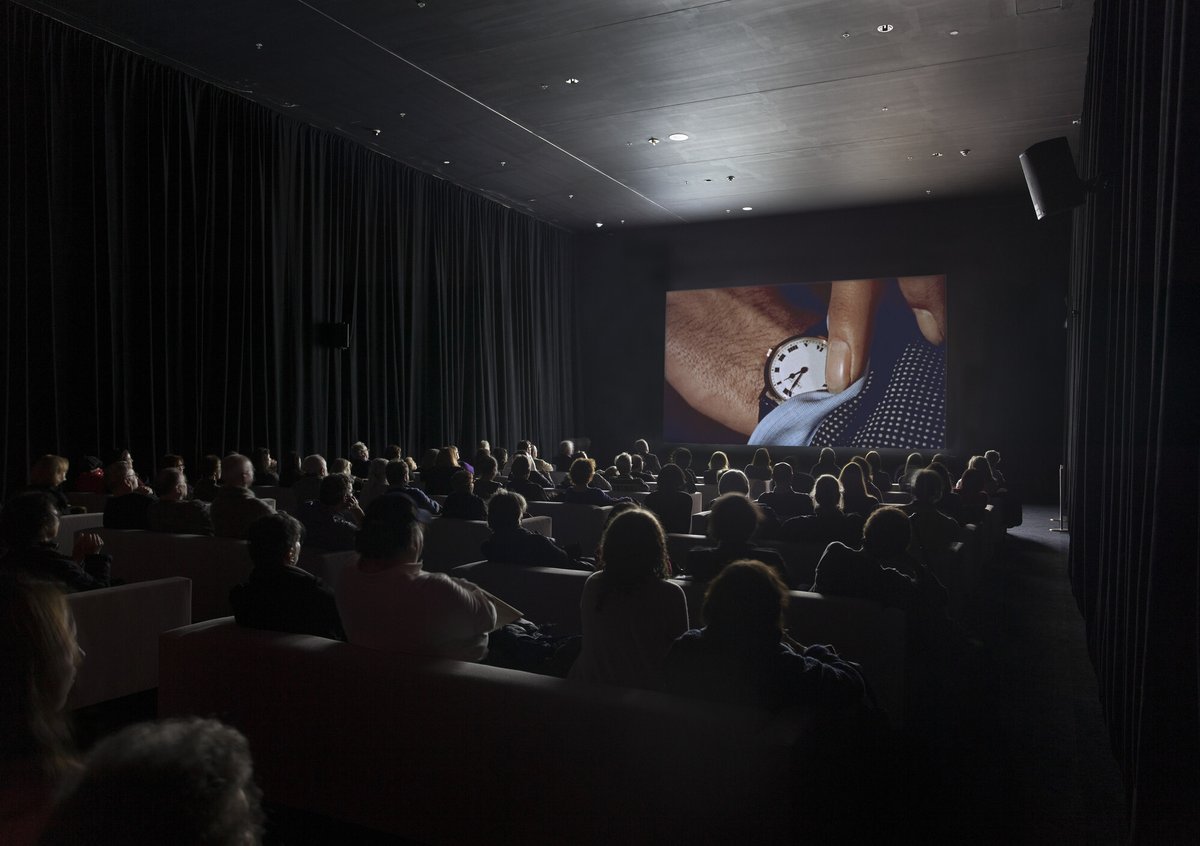


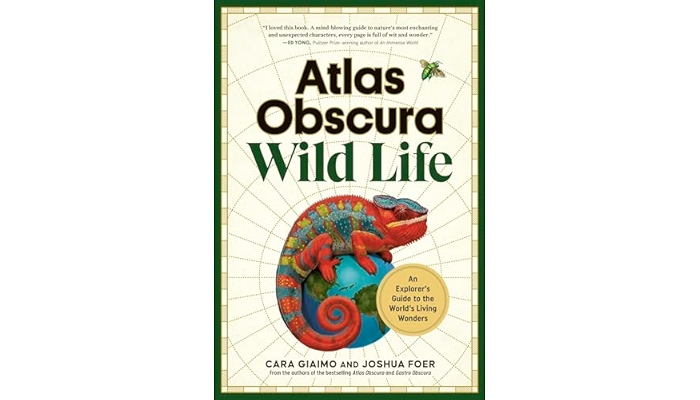
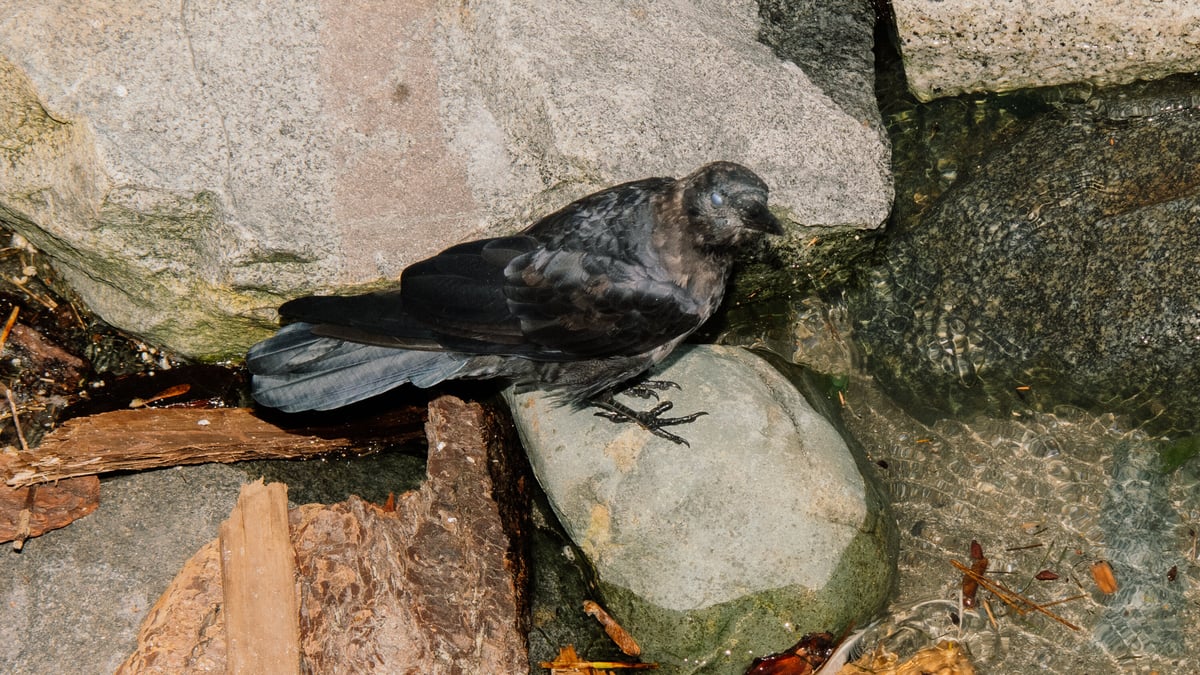
Stay Connected